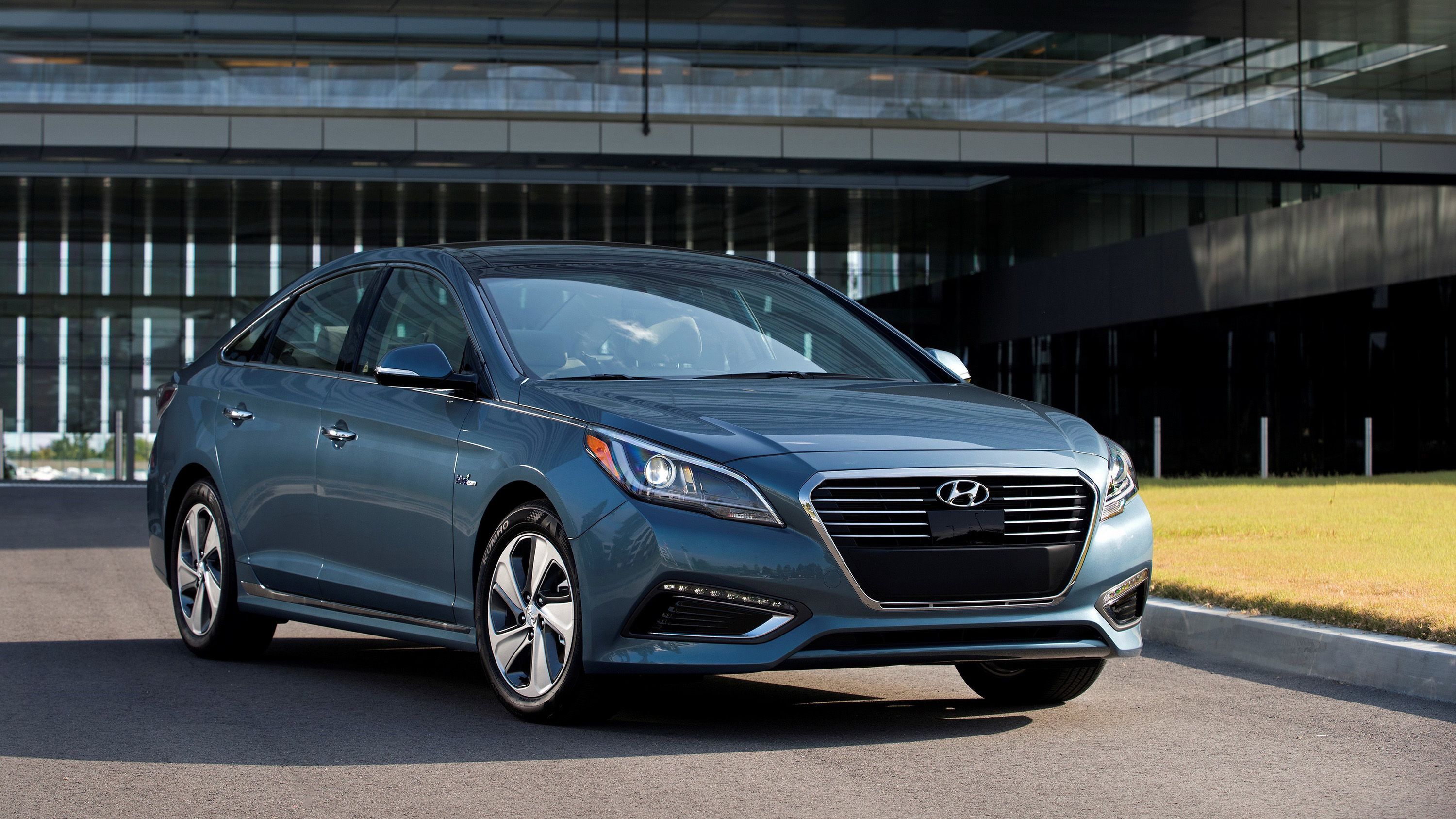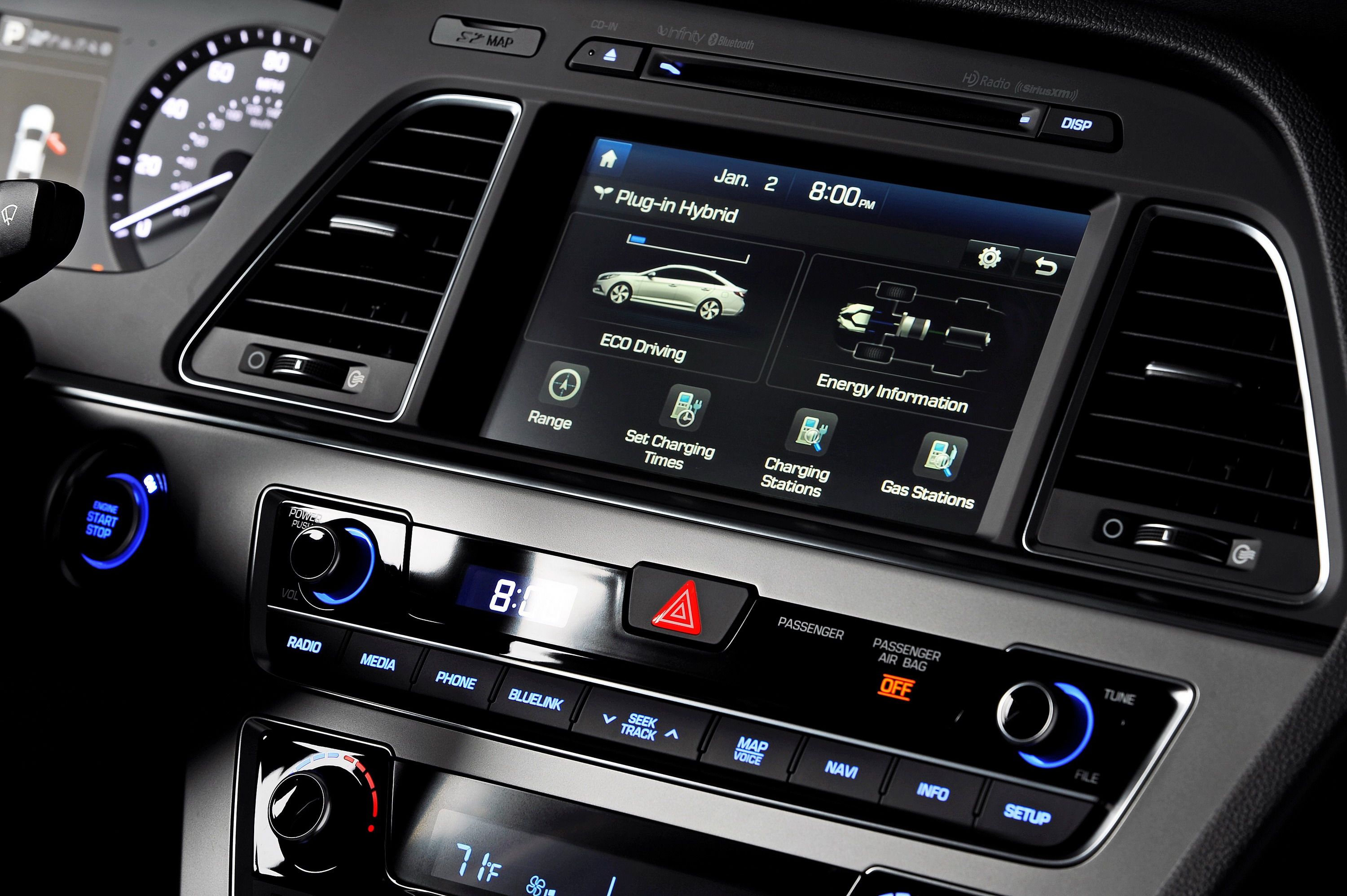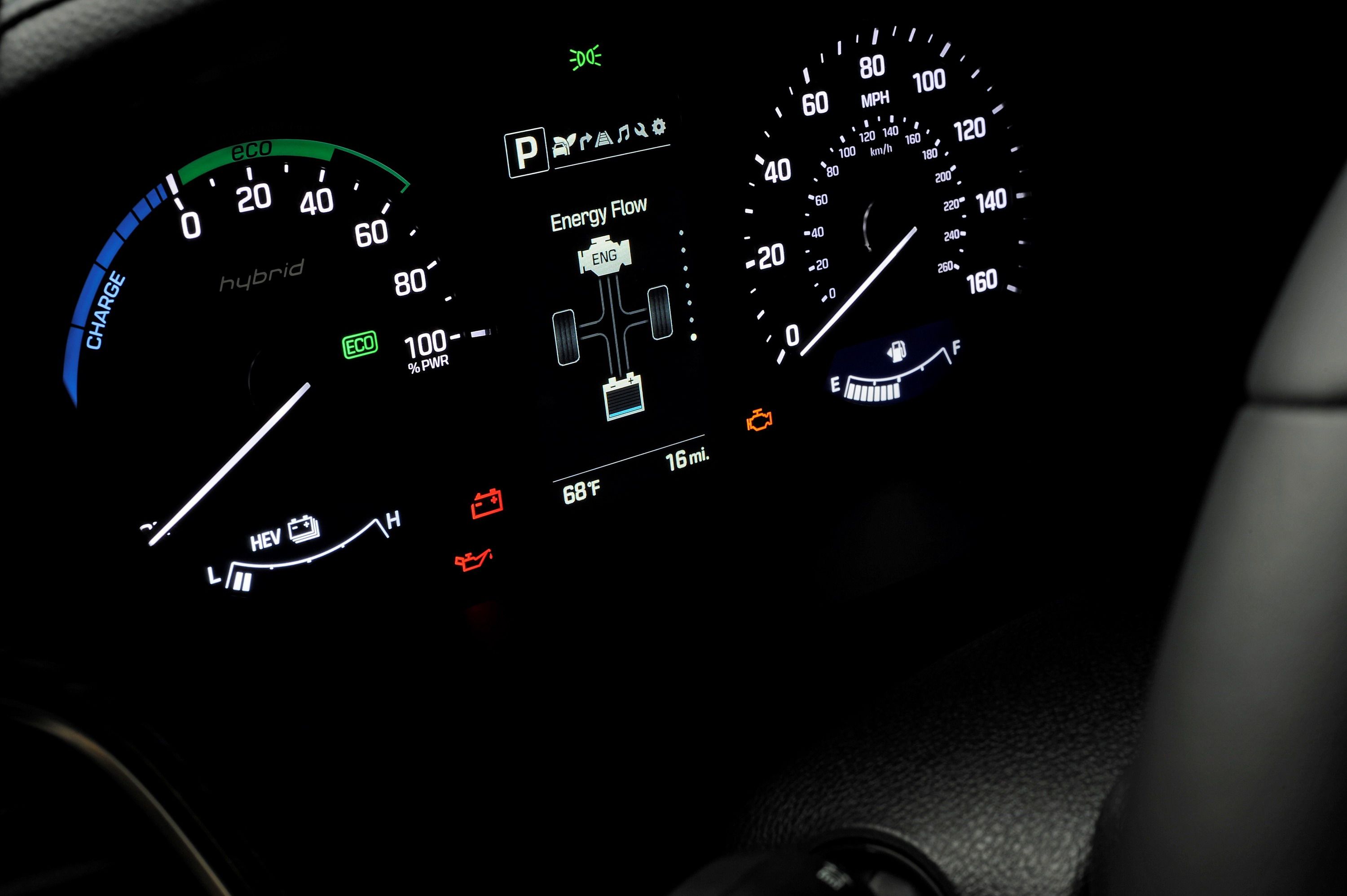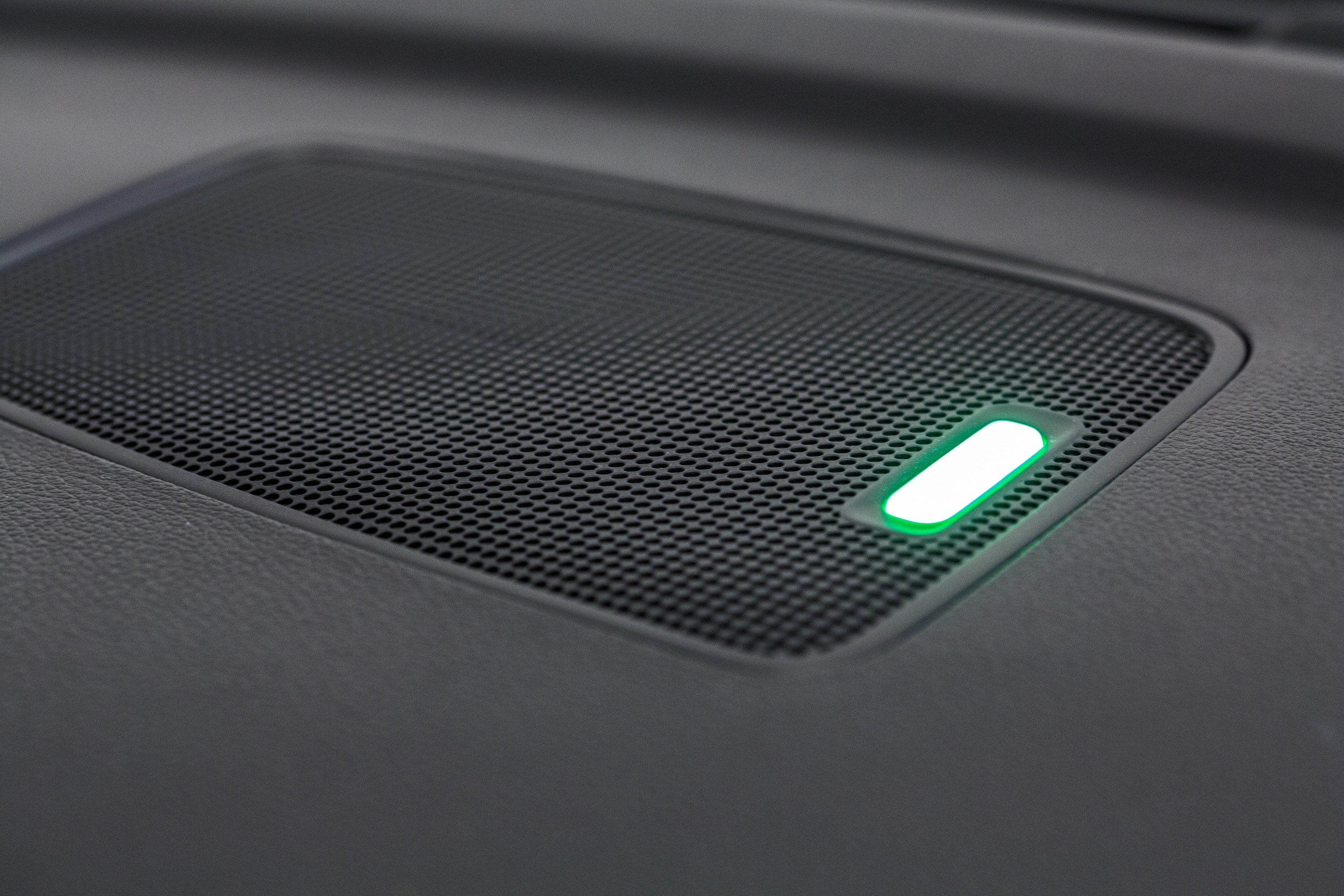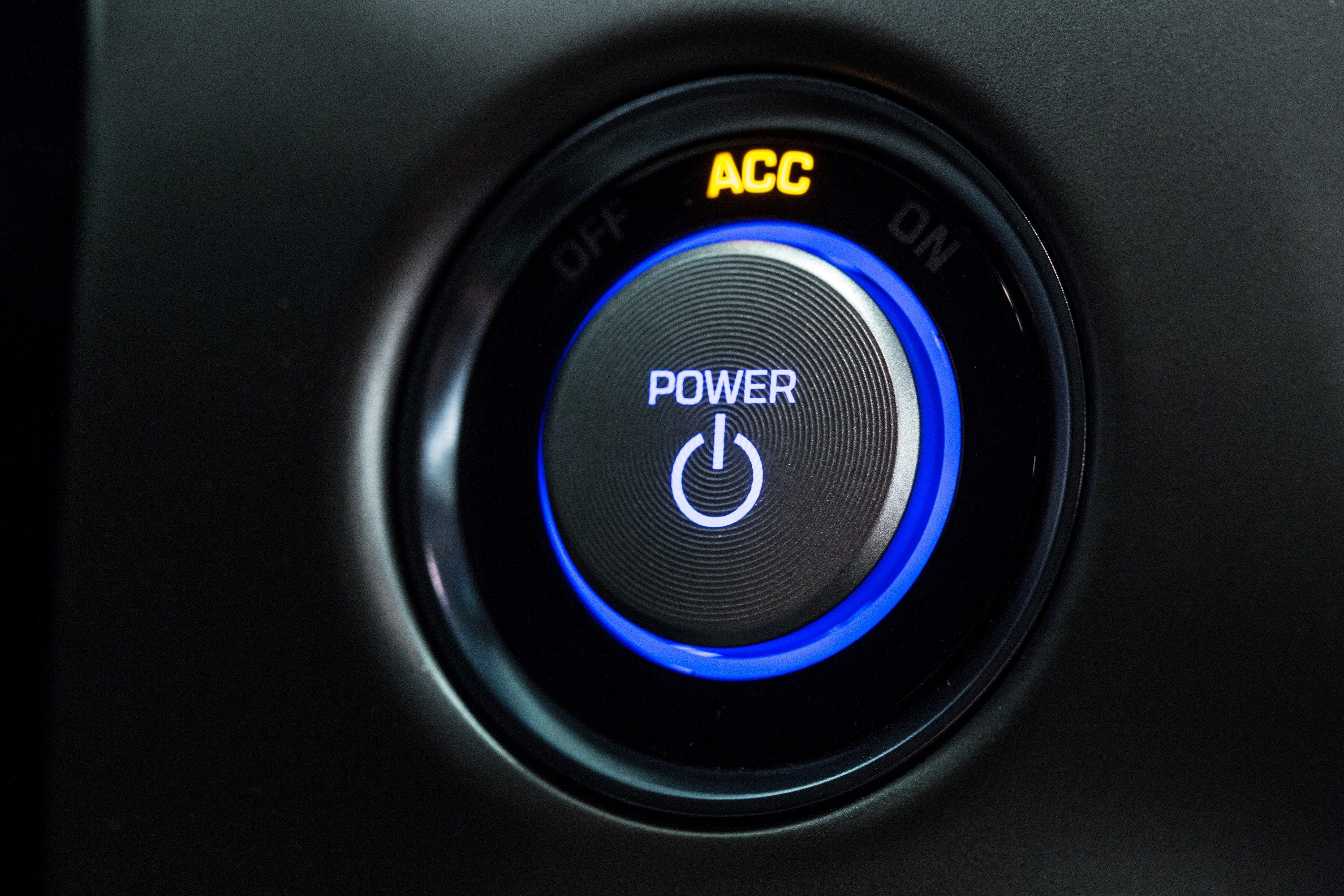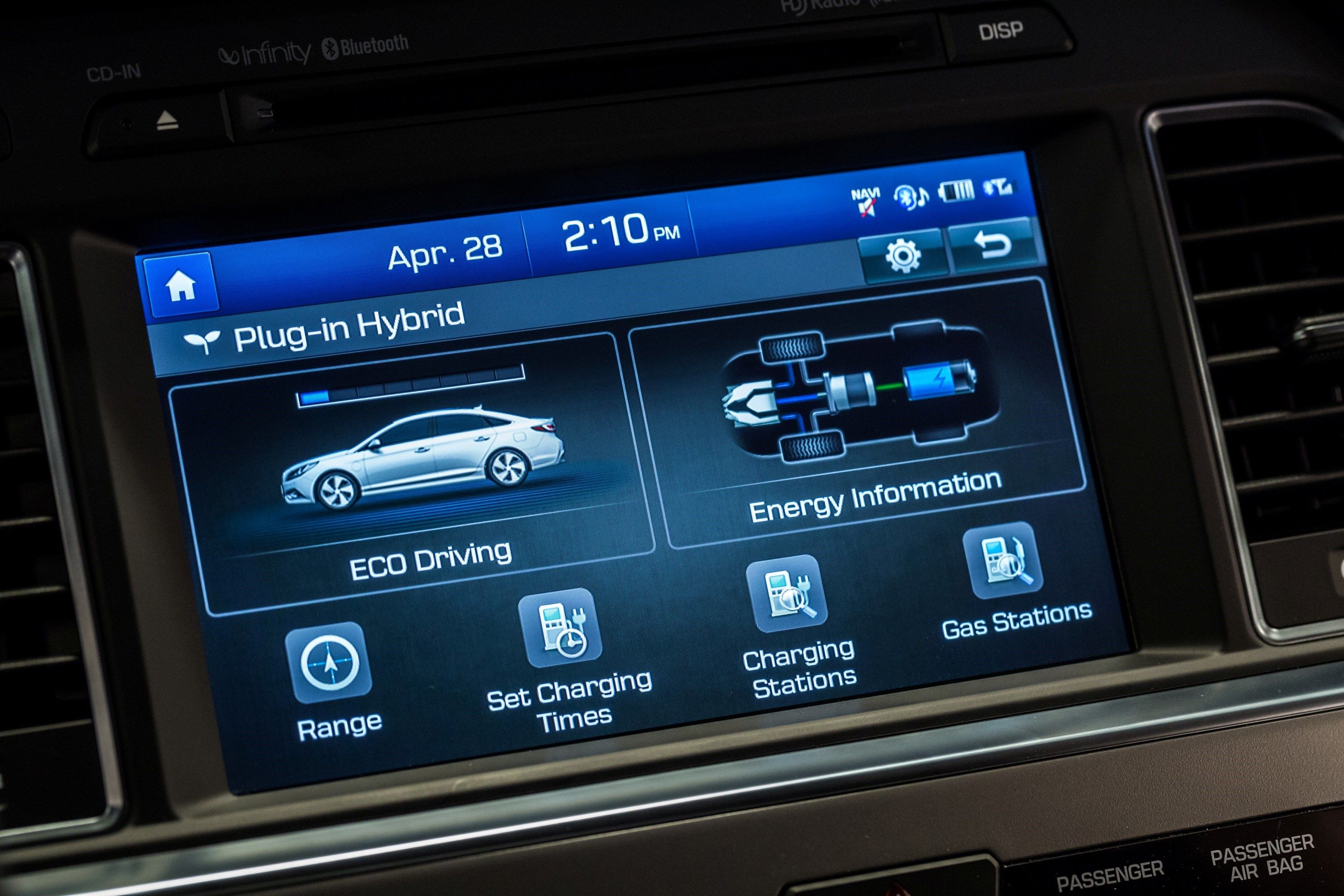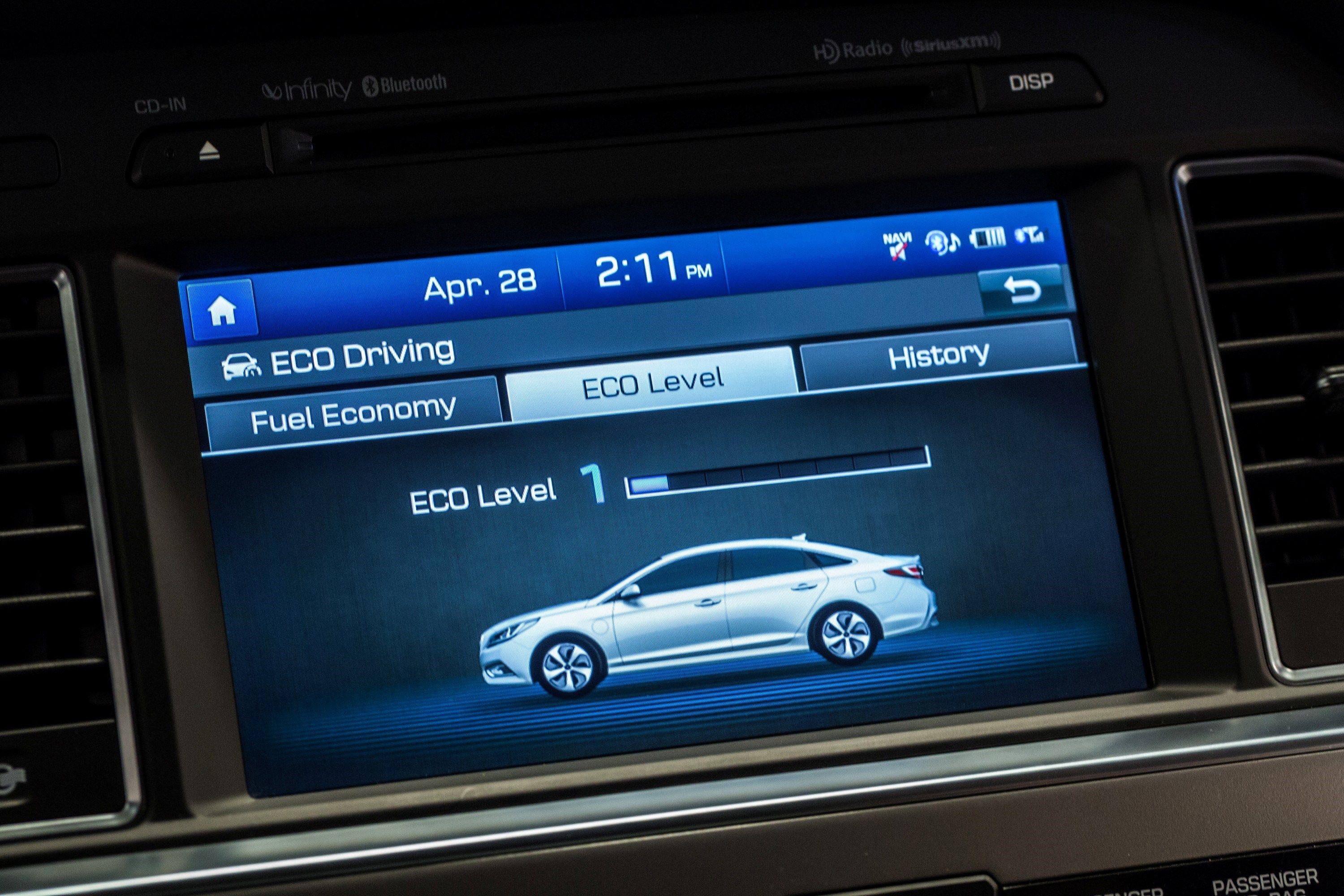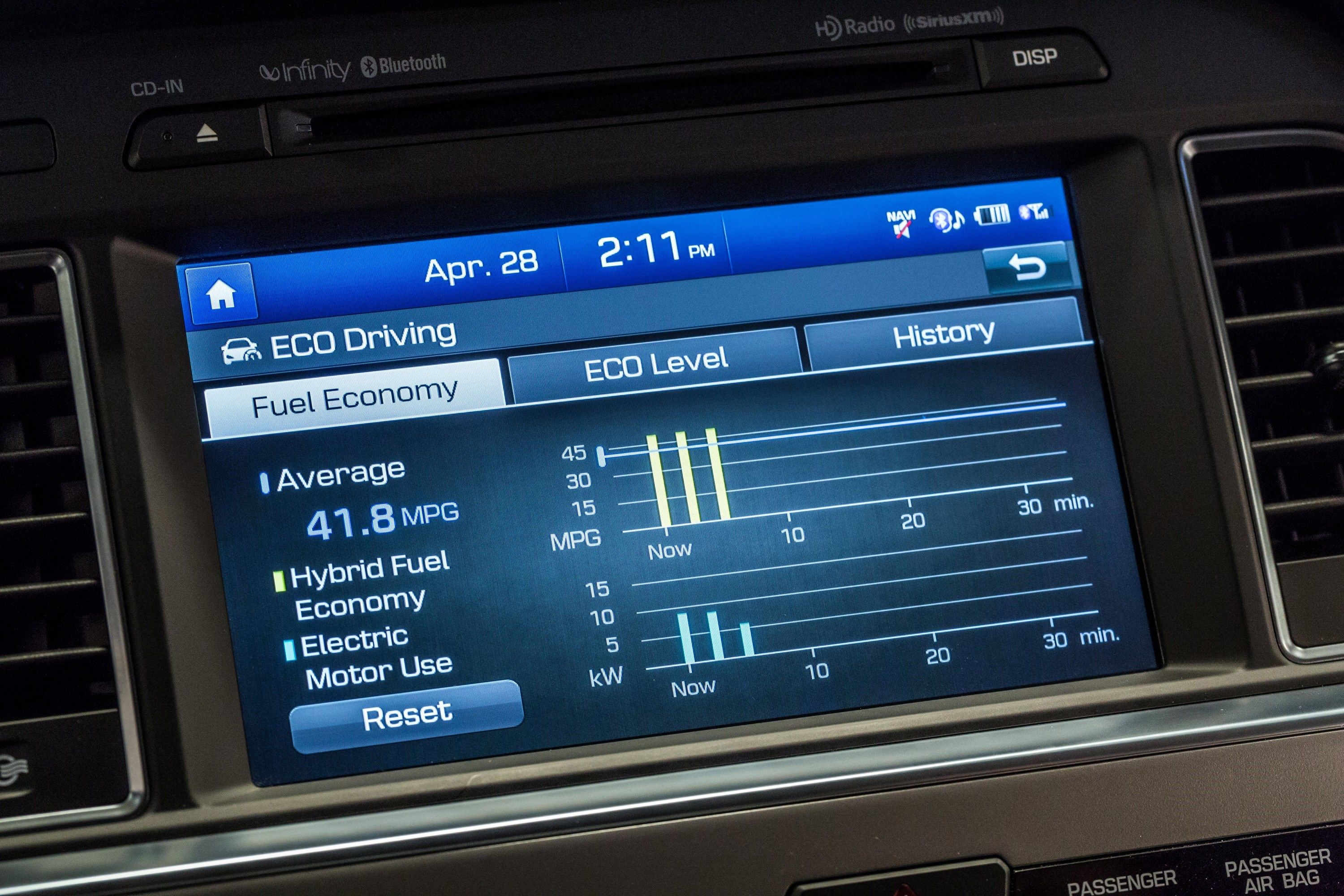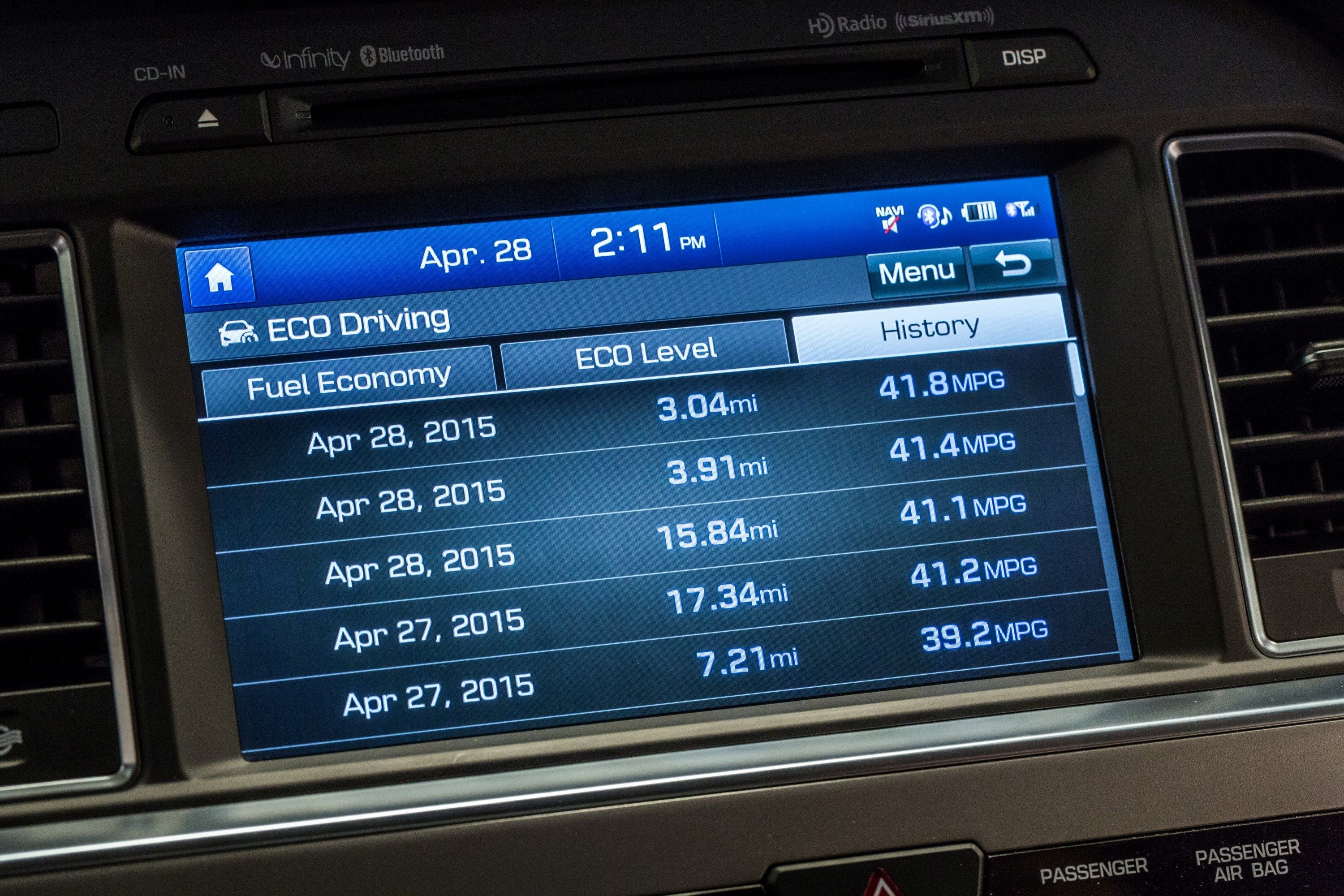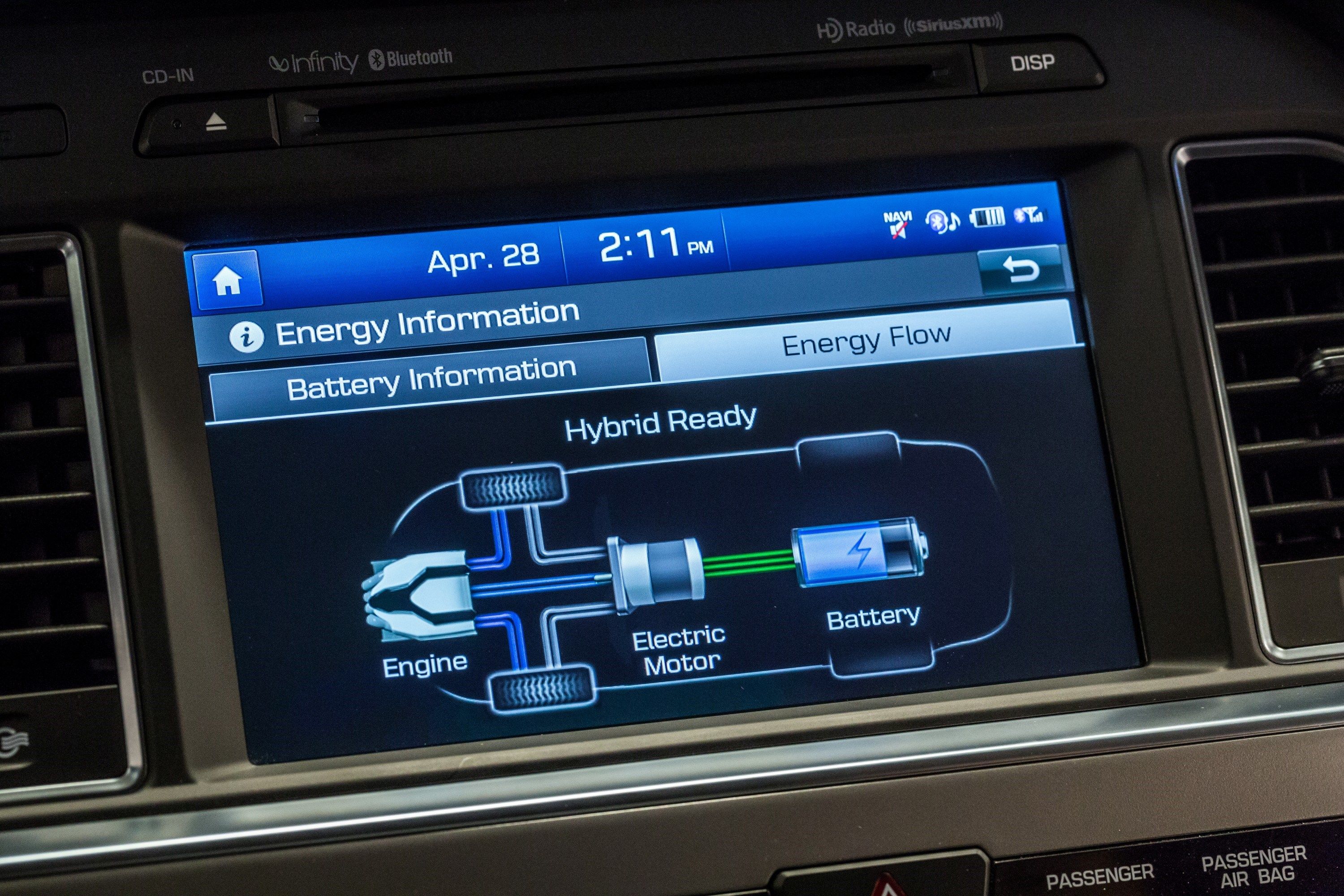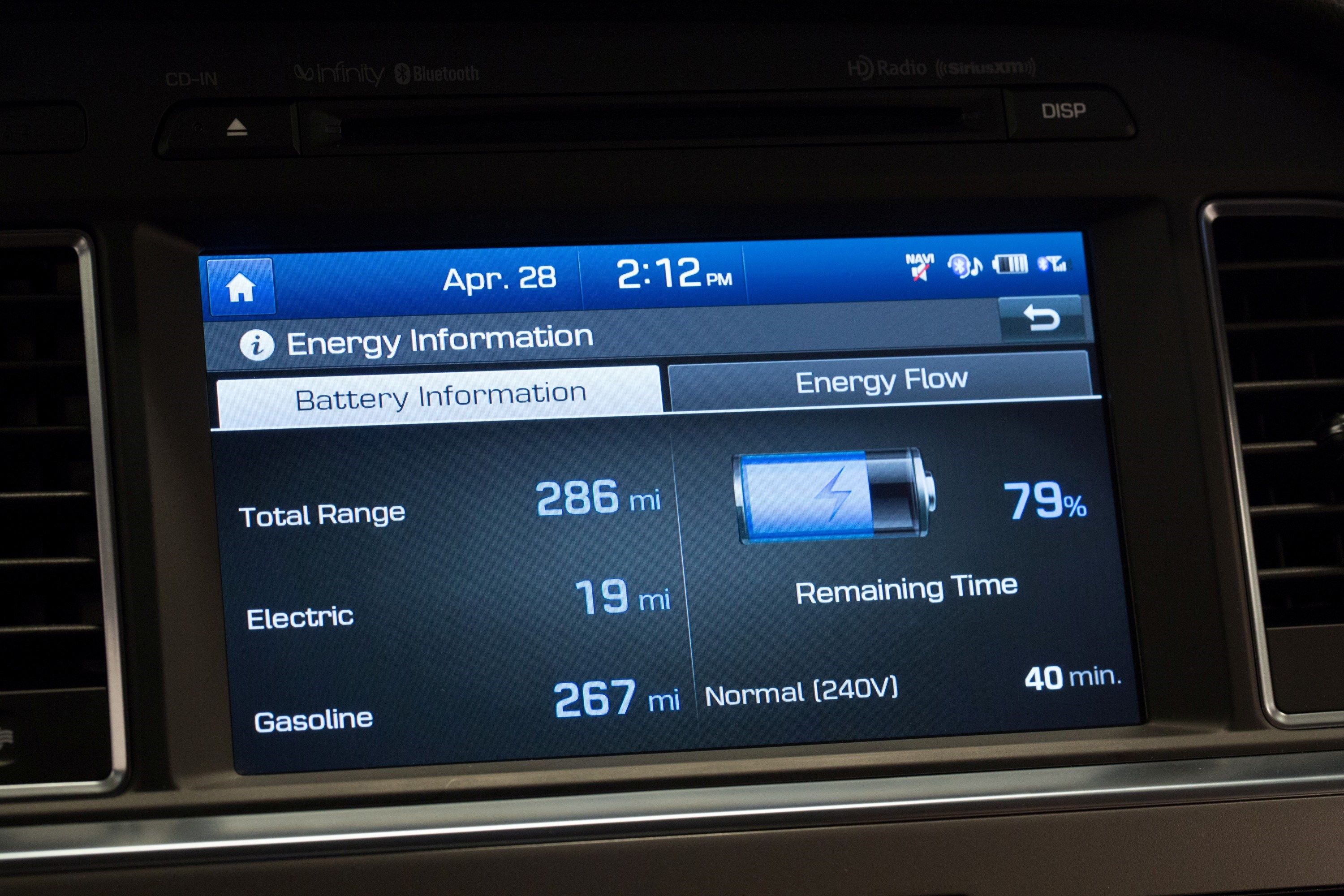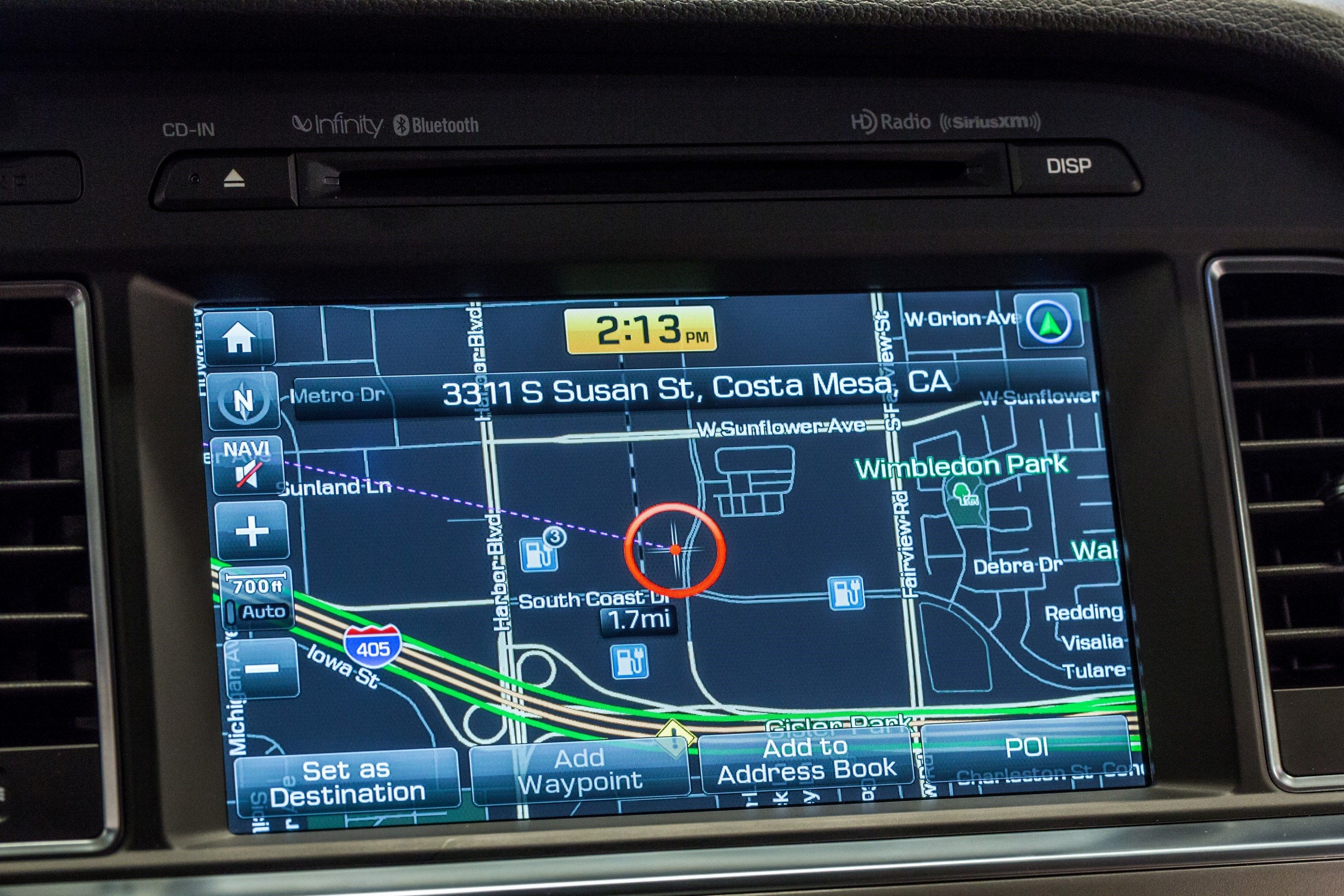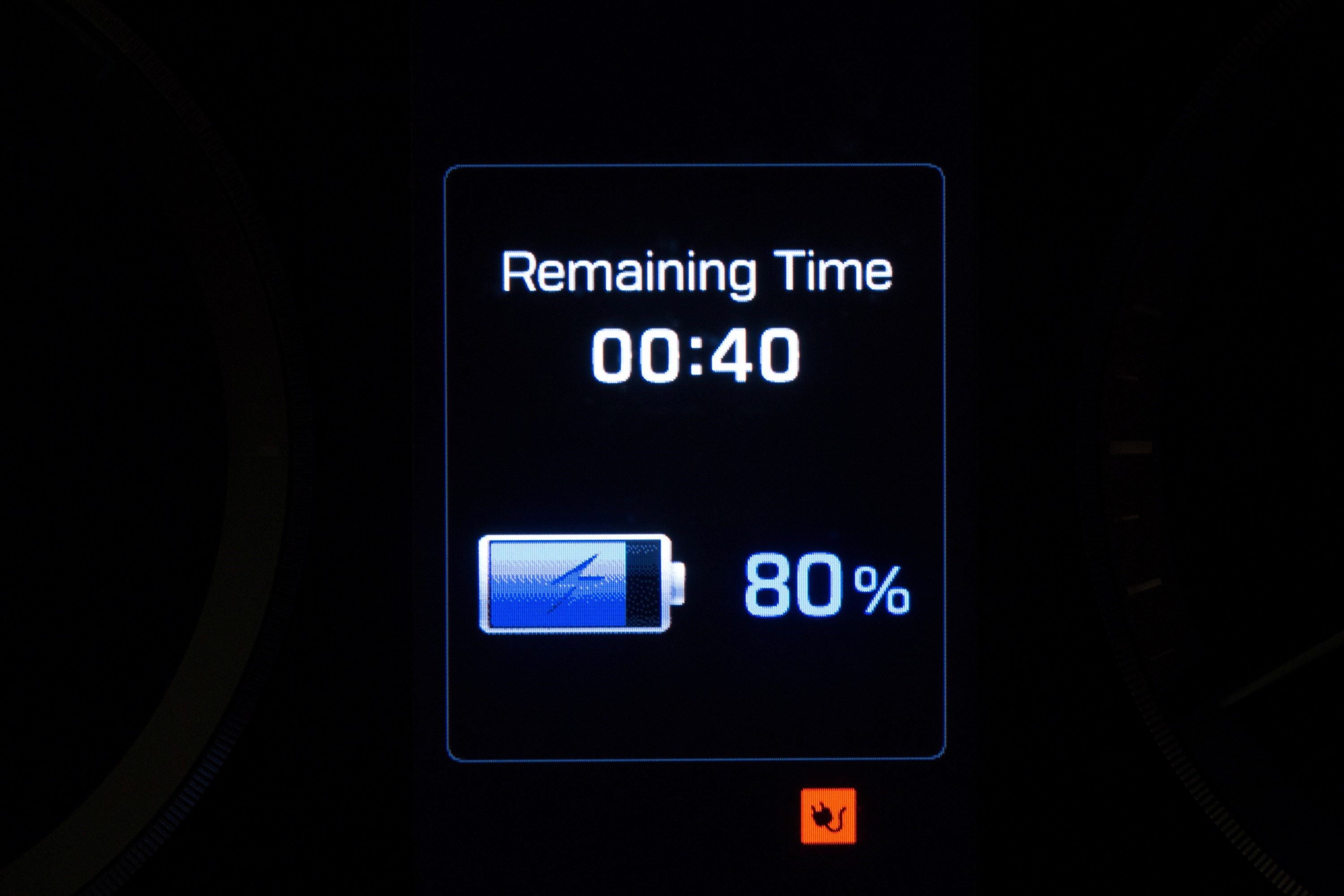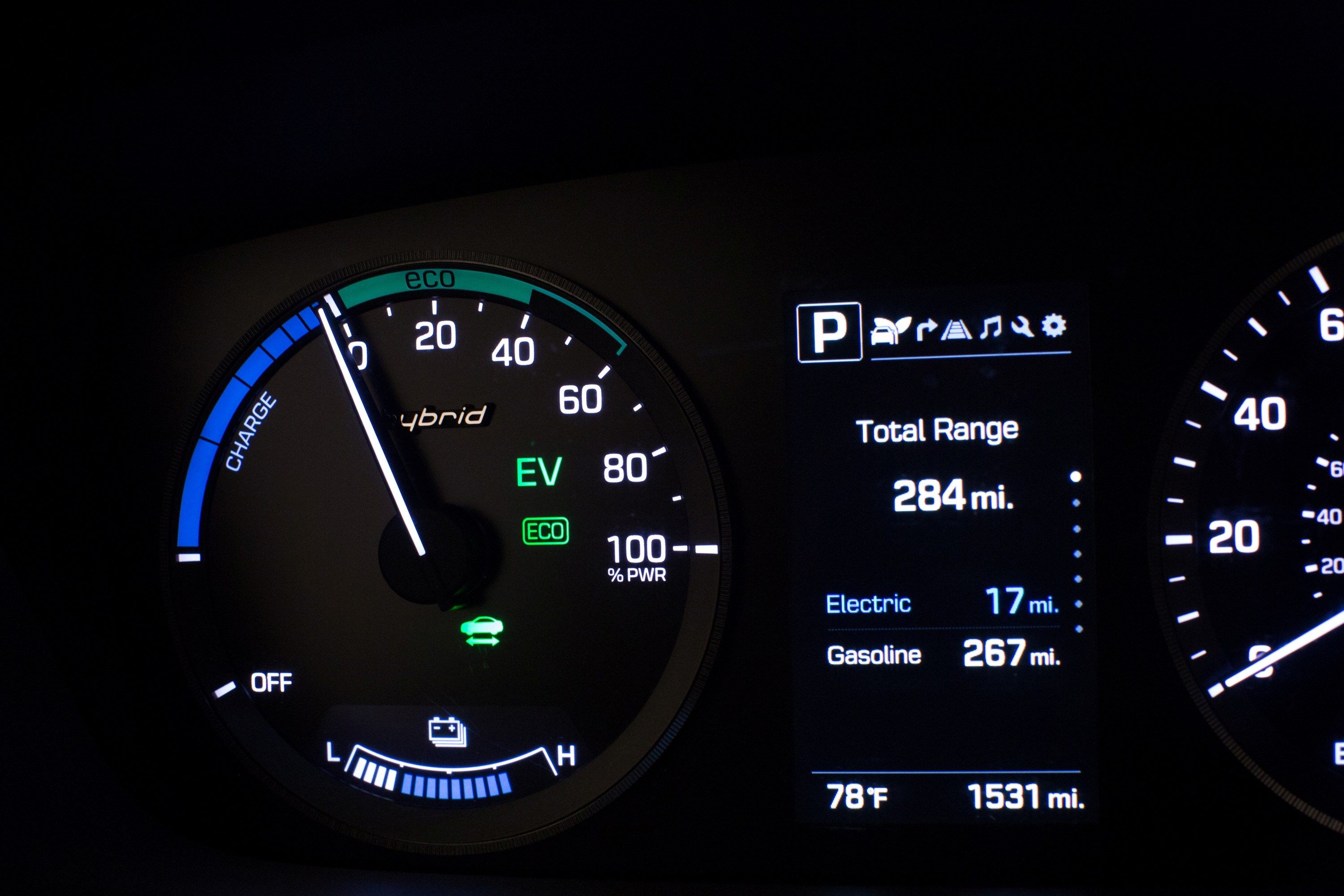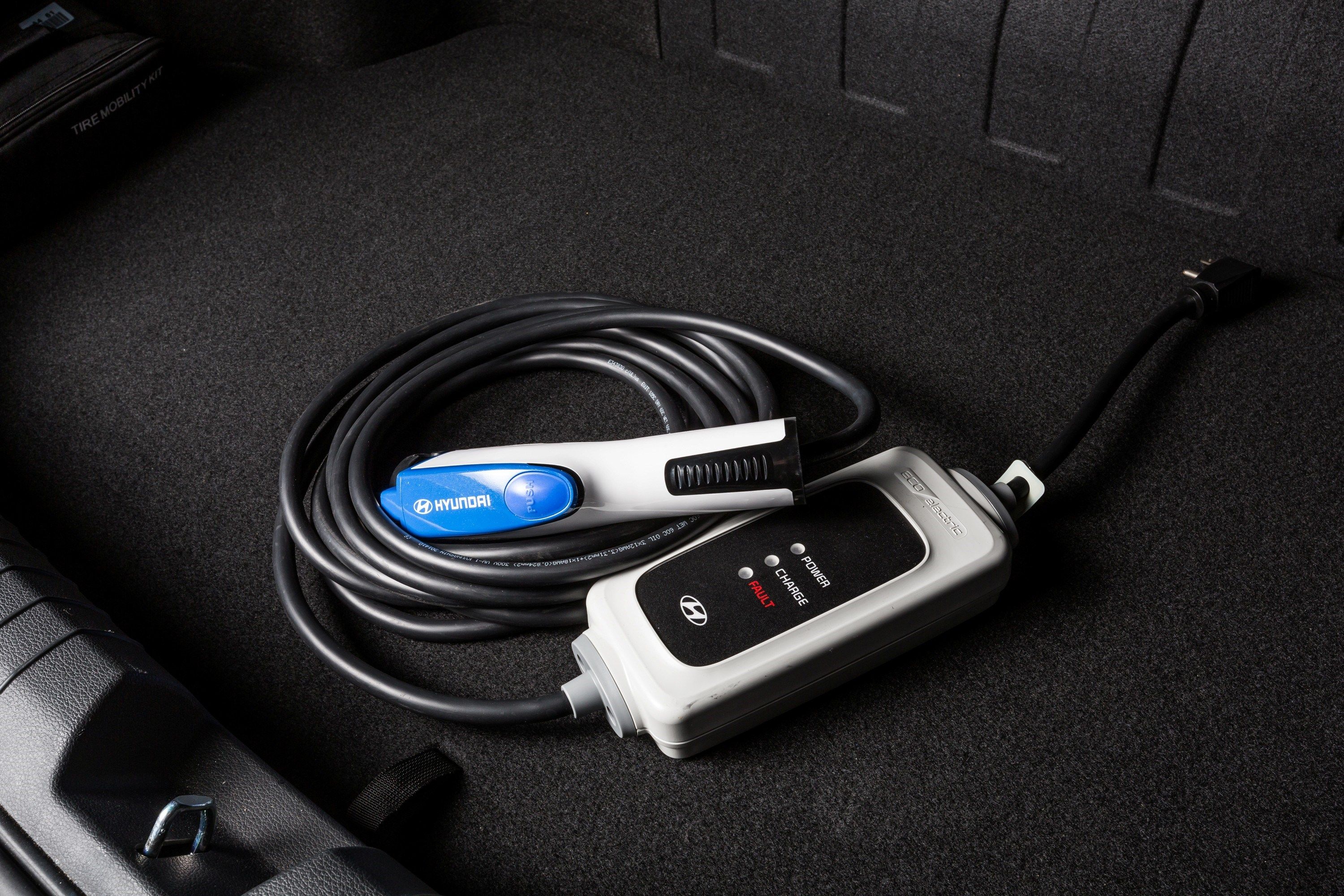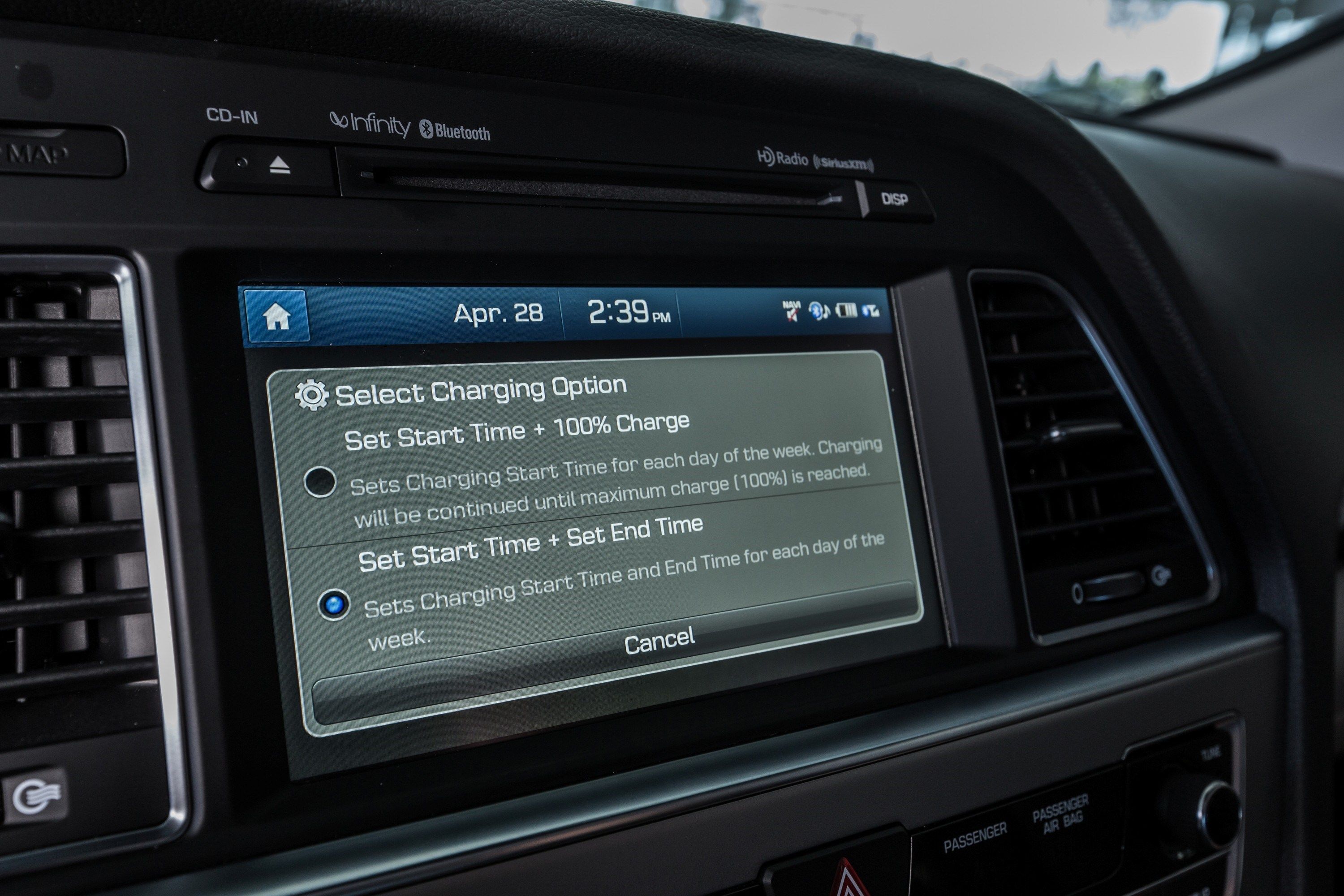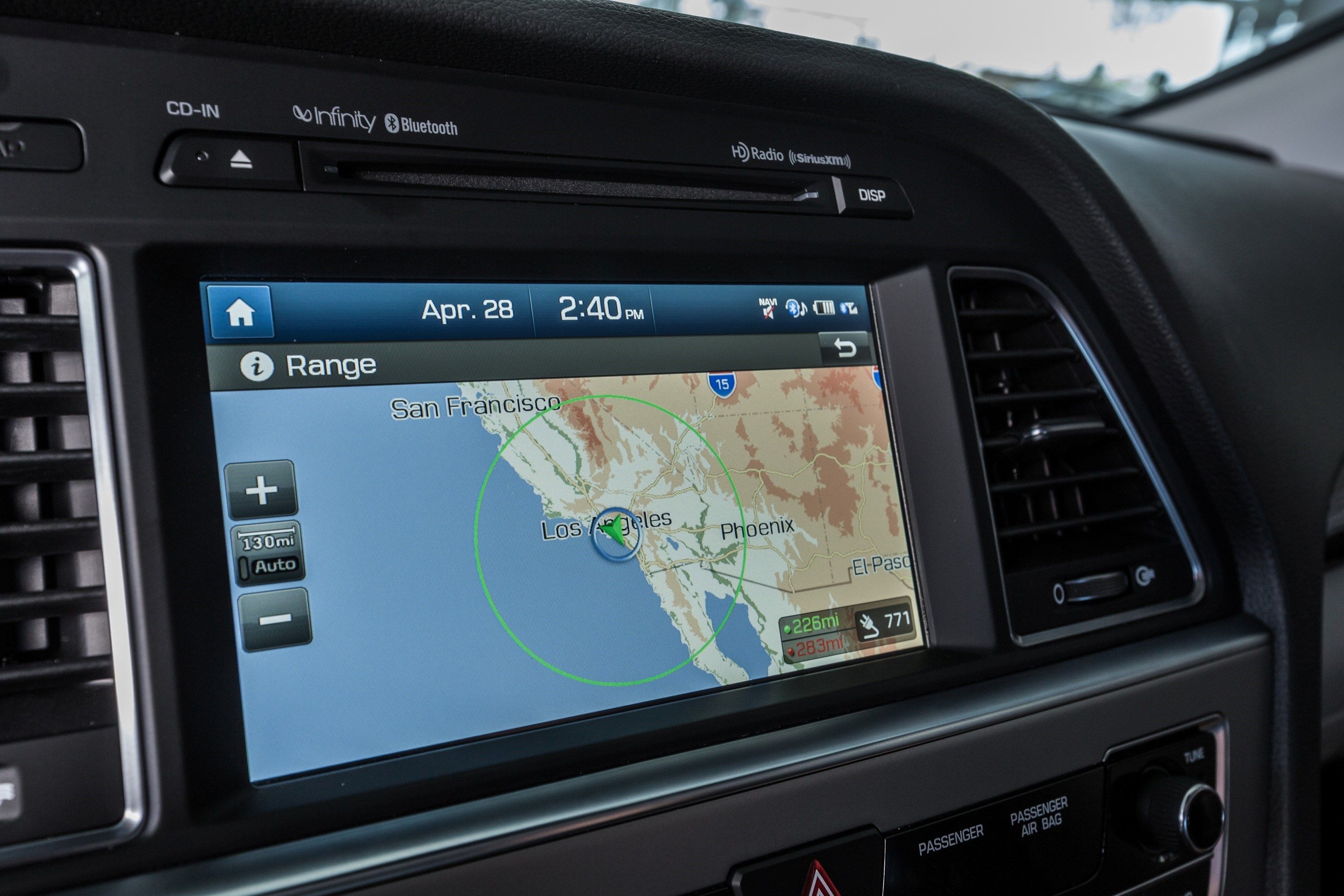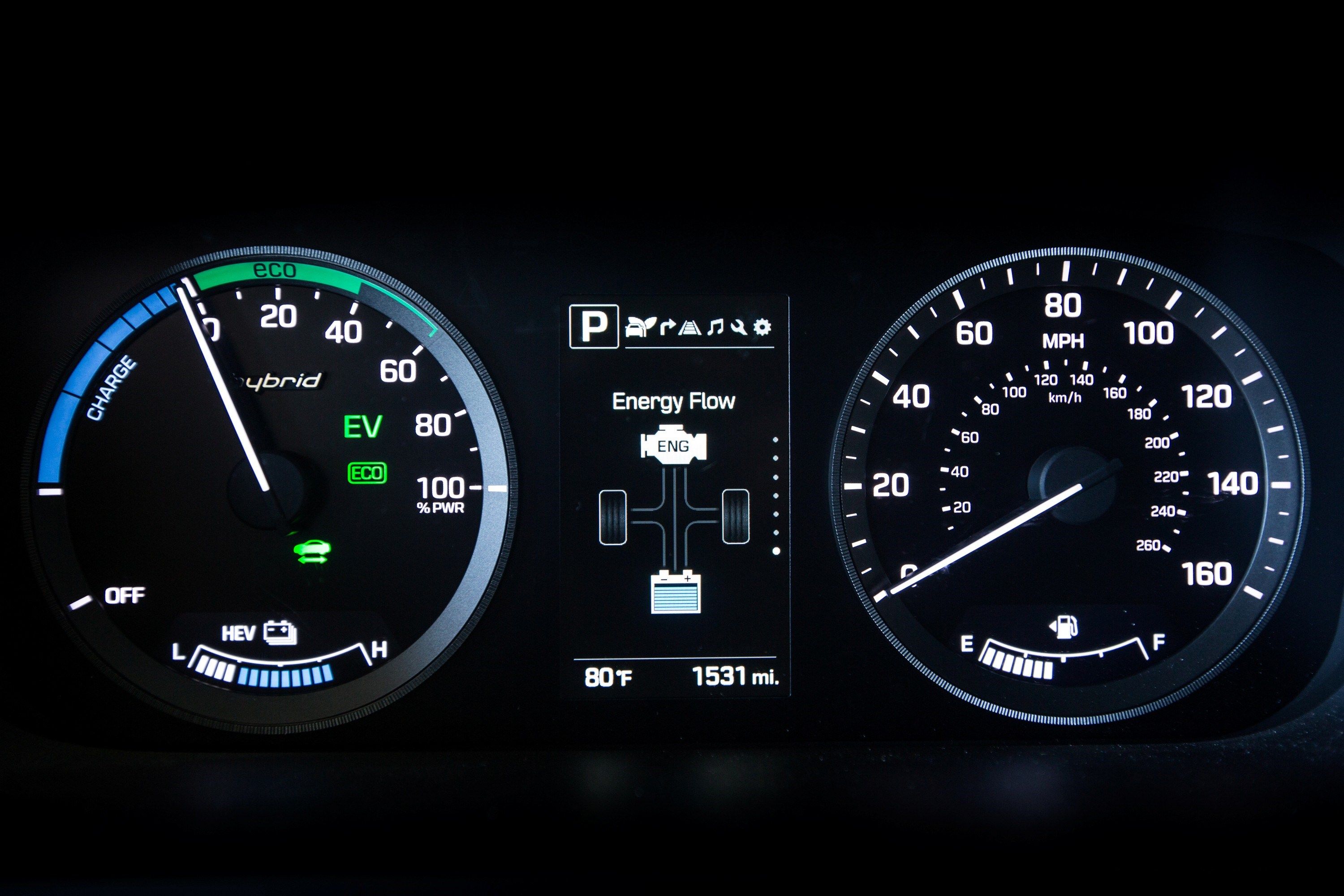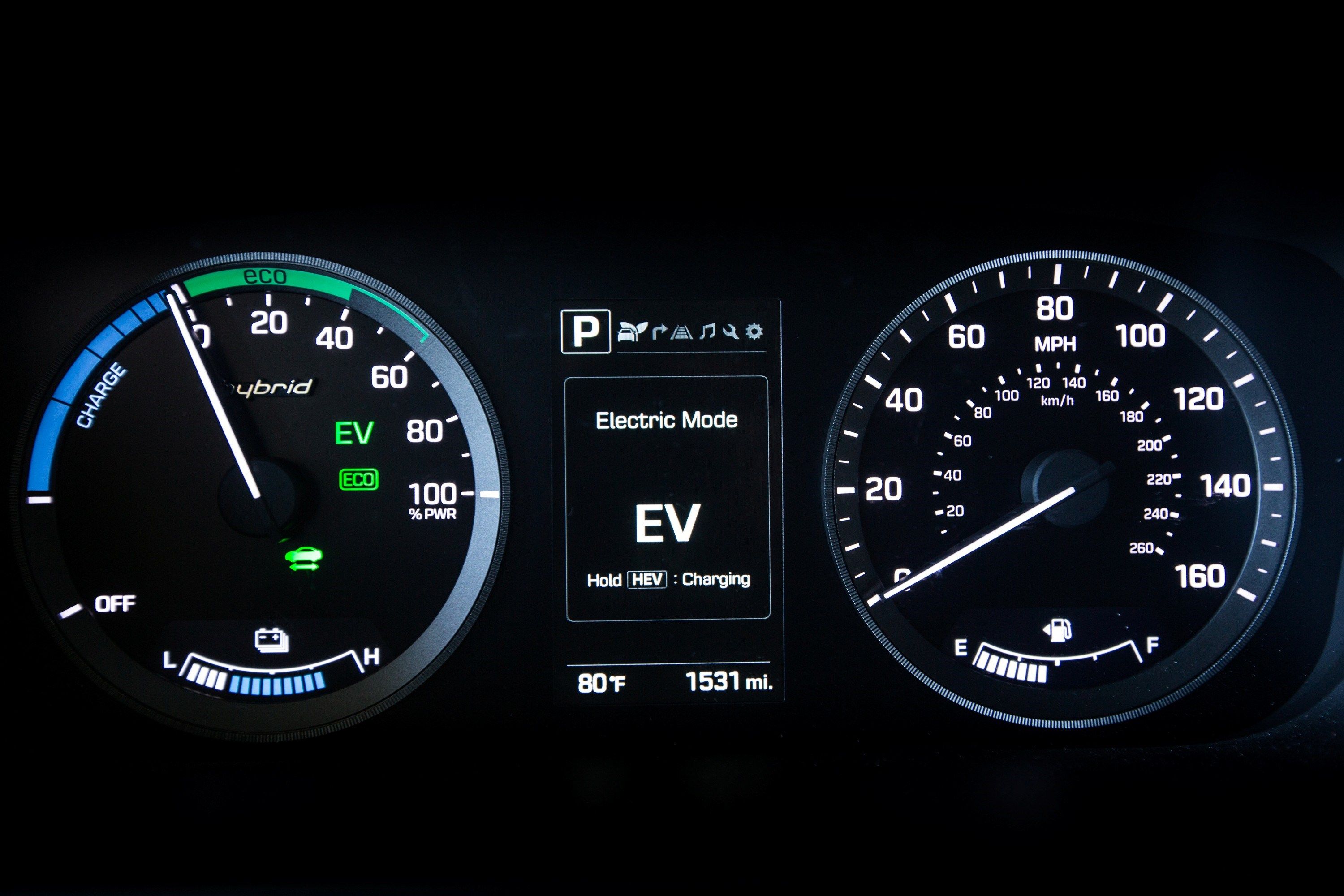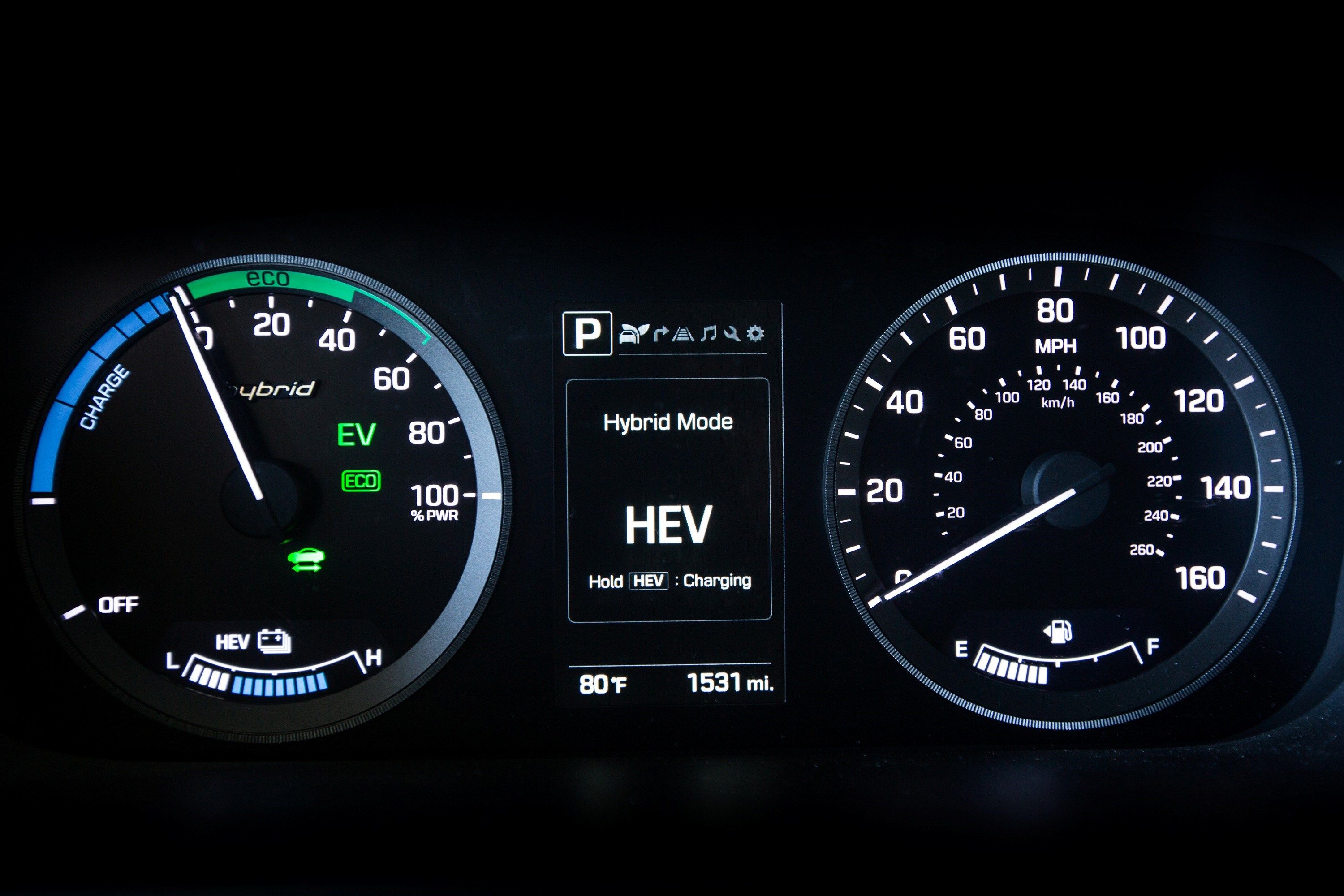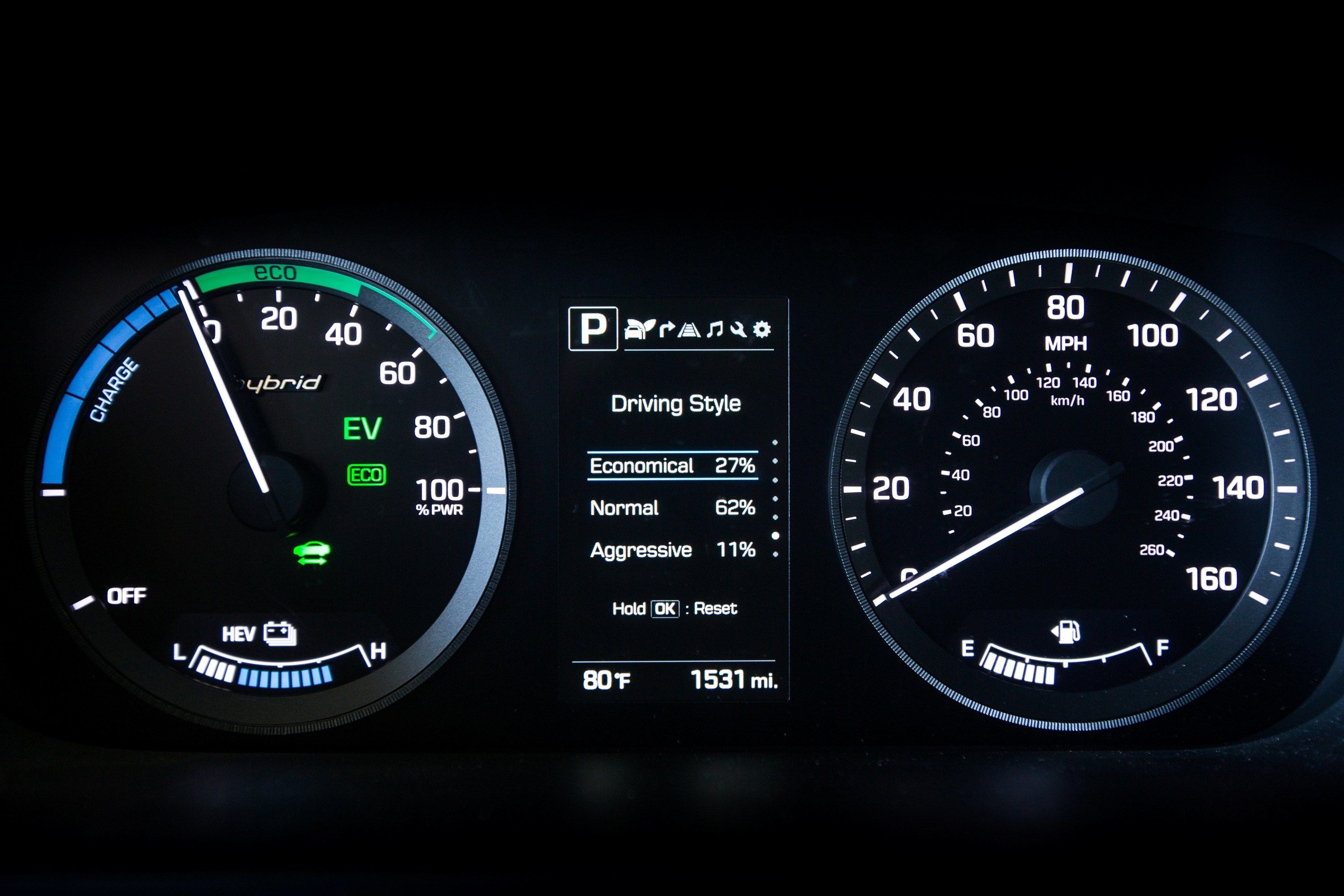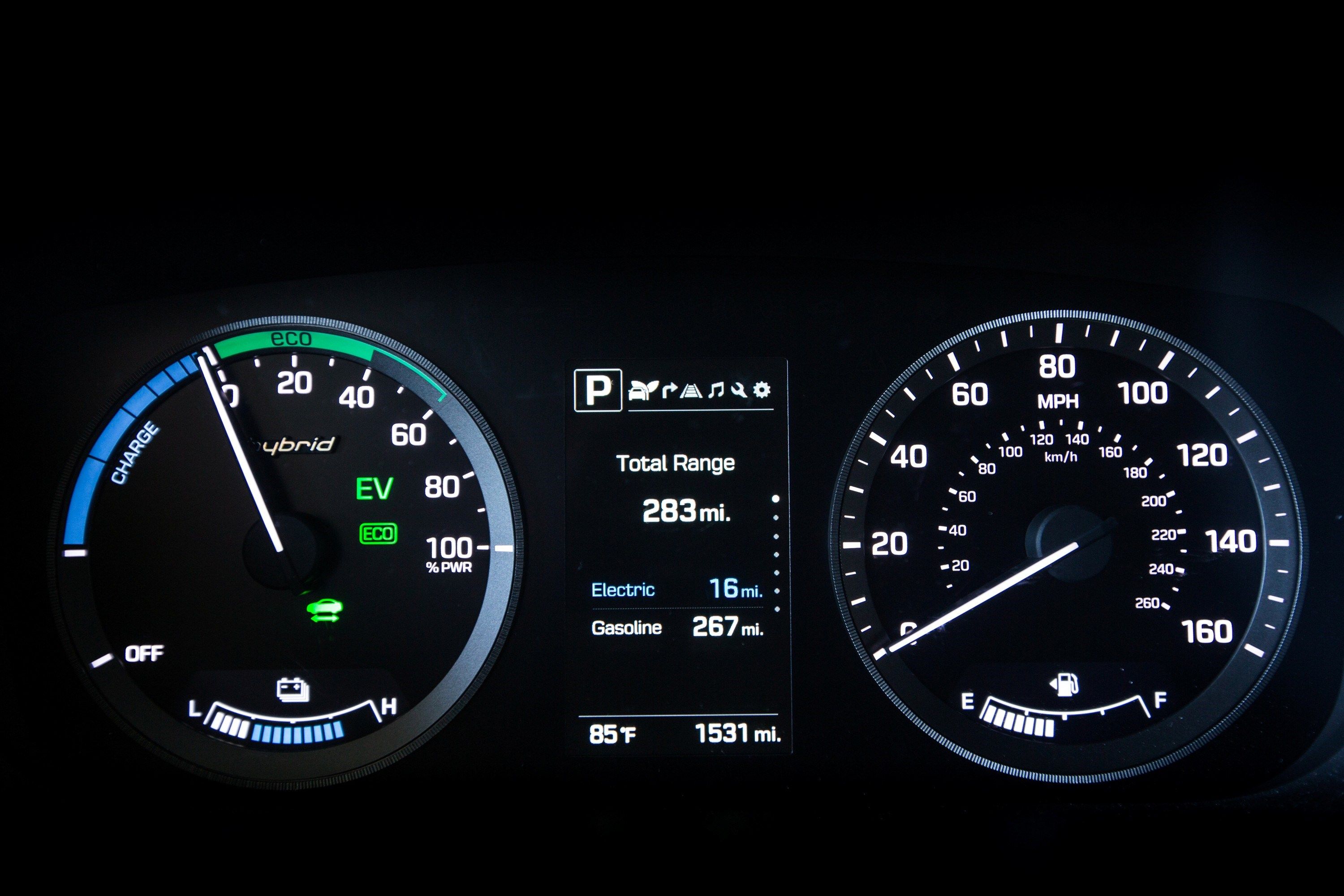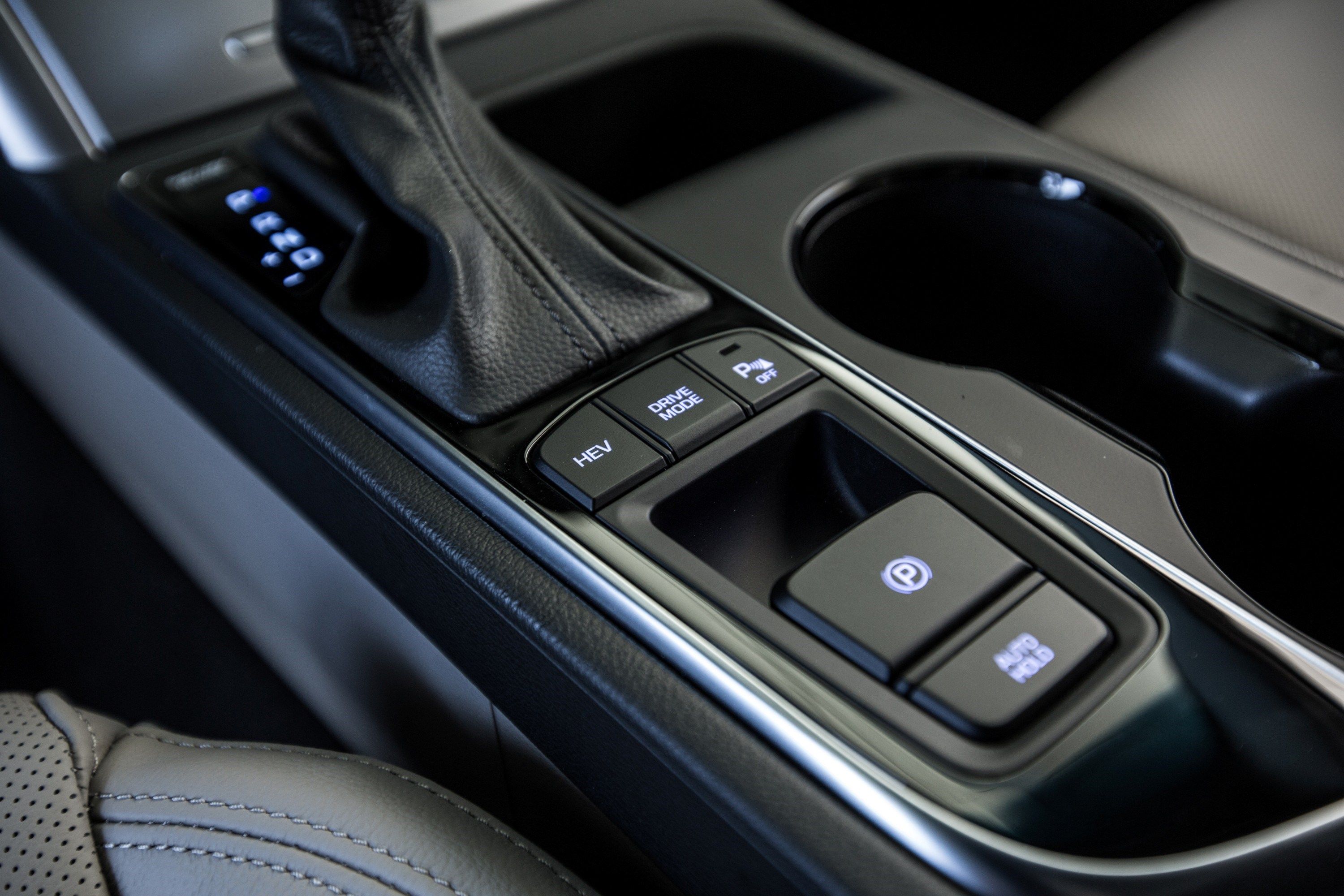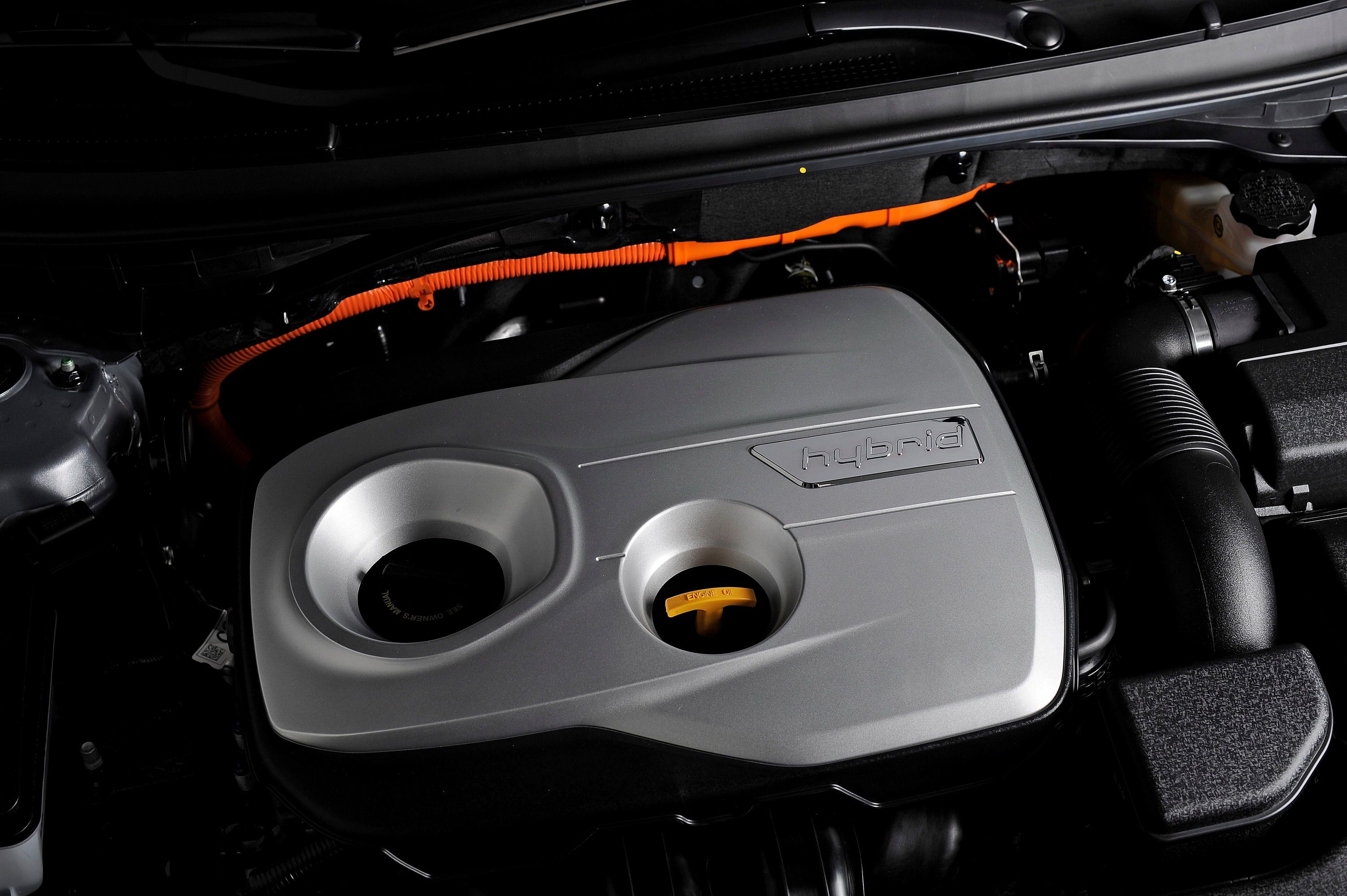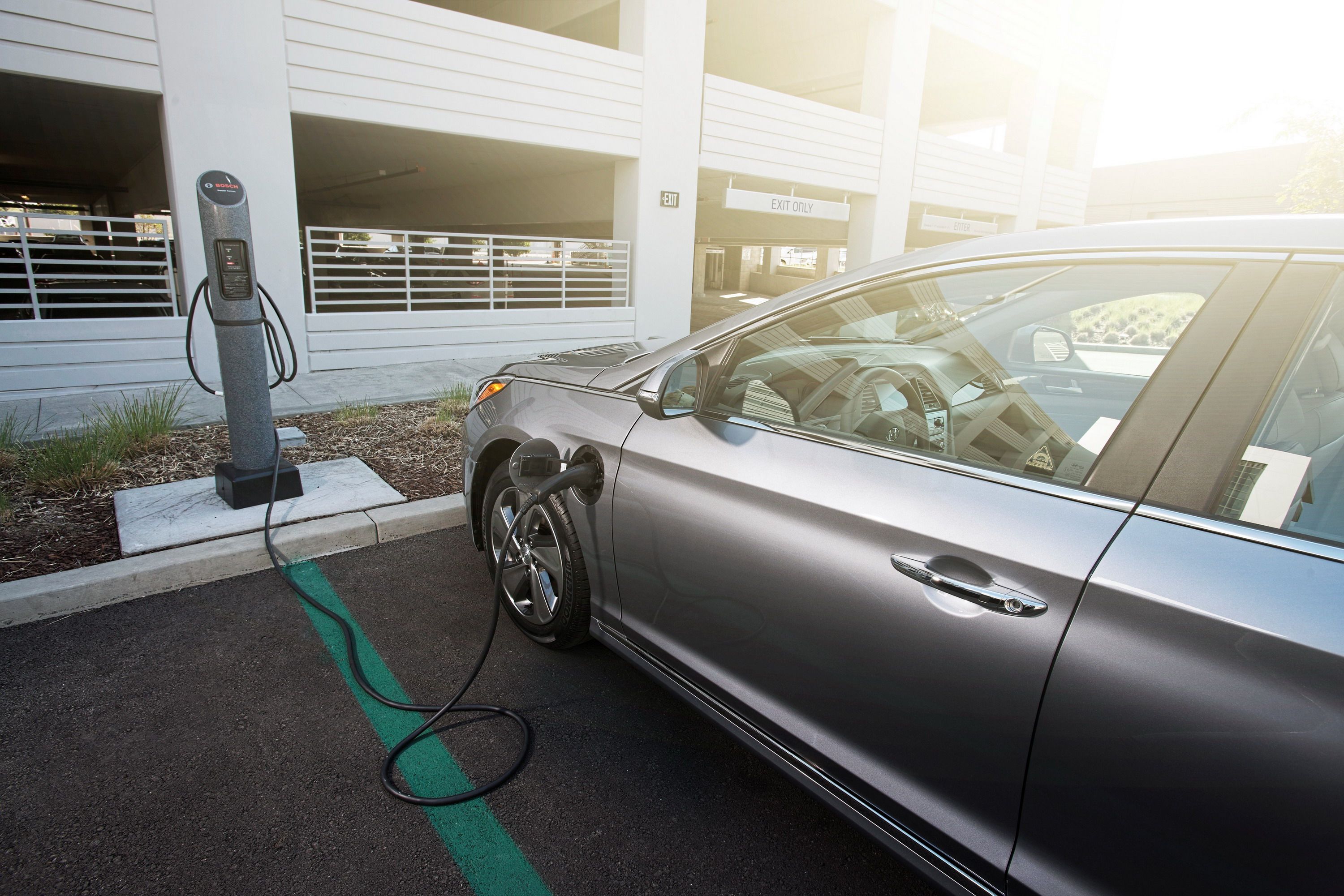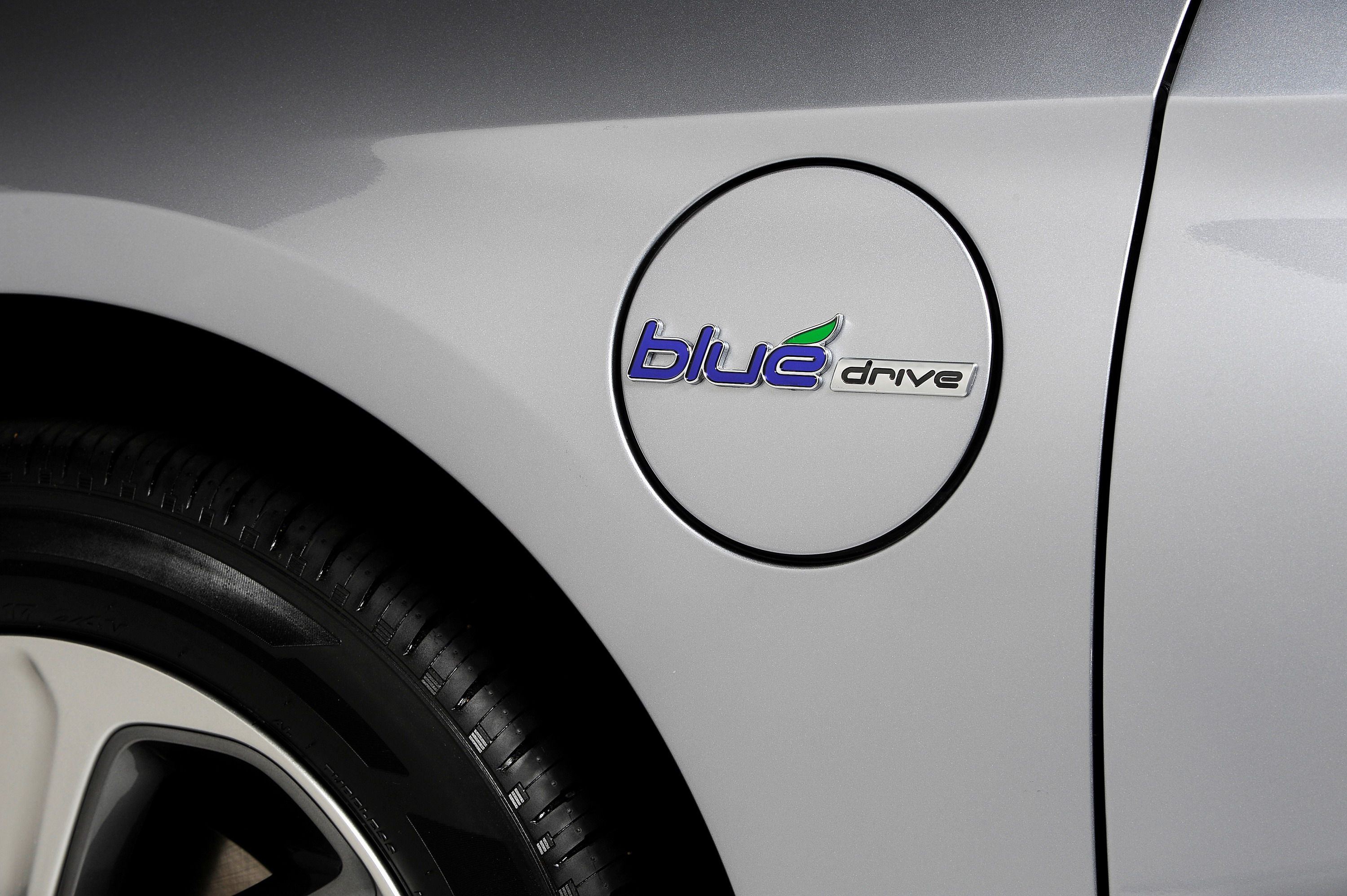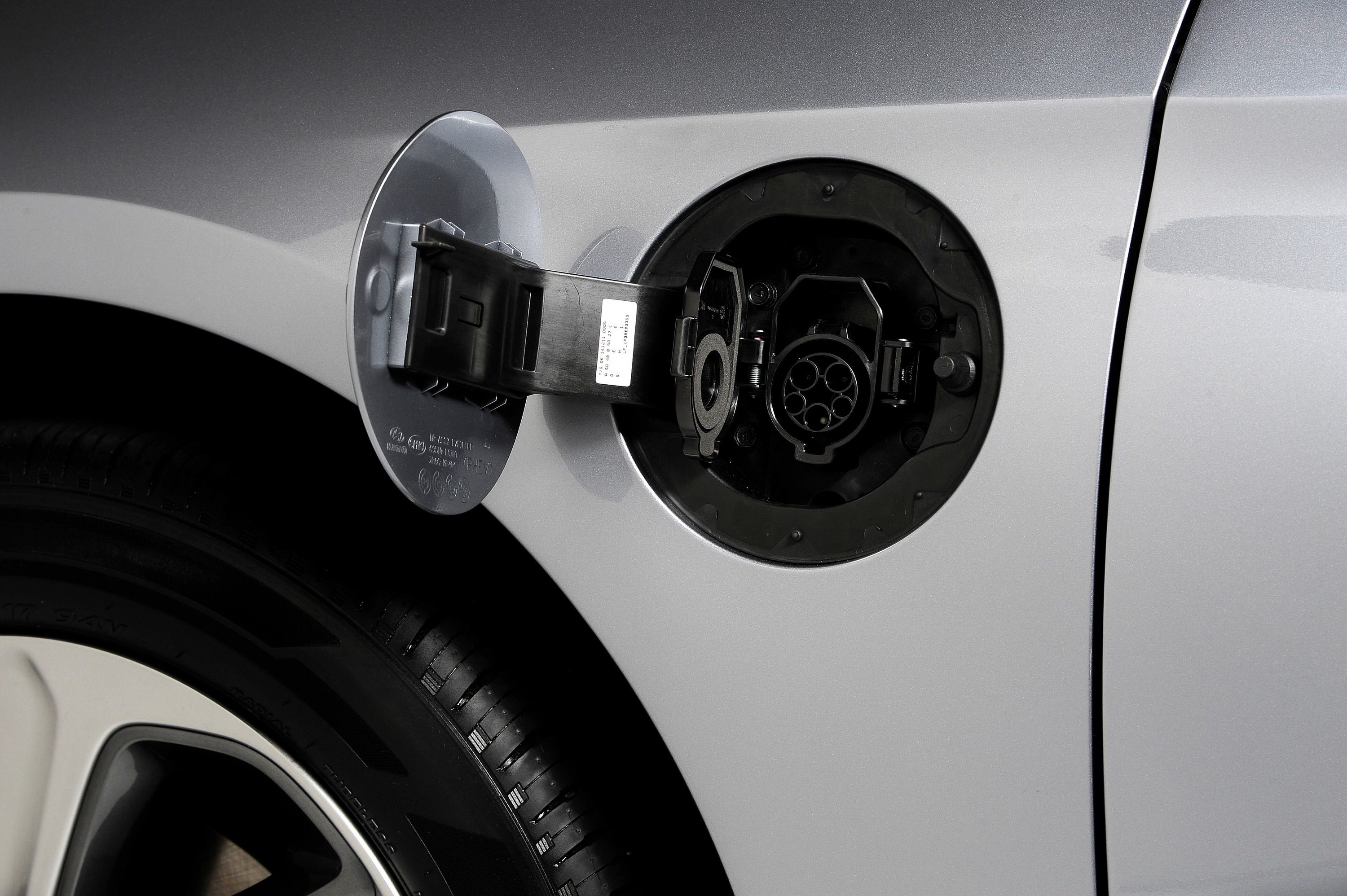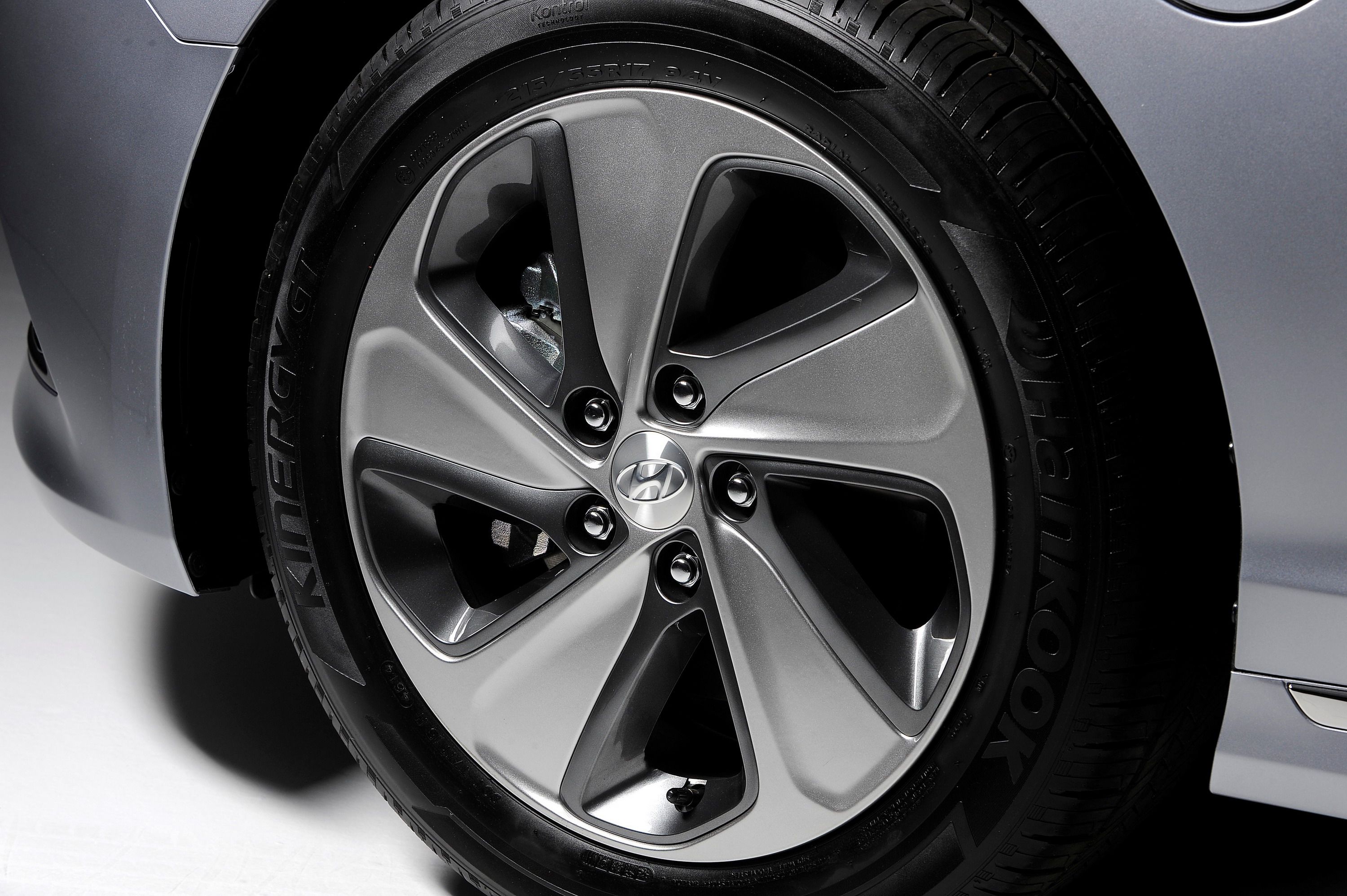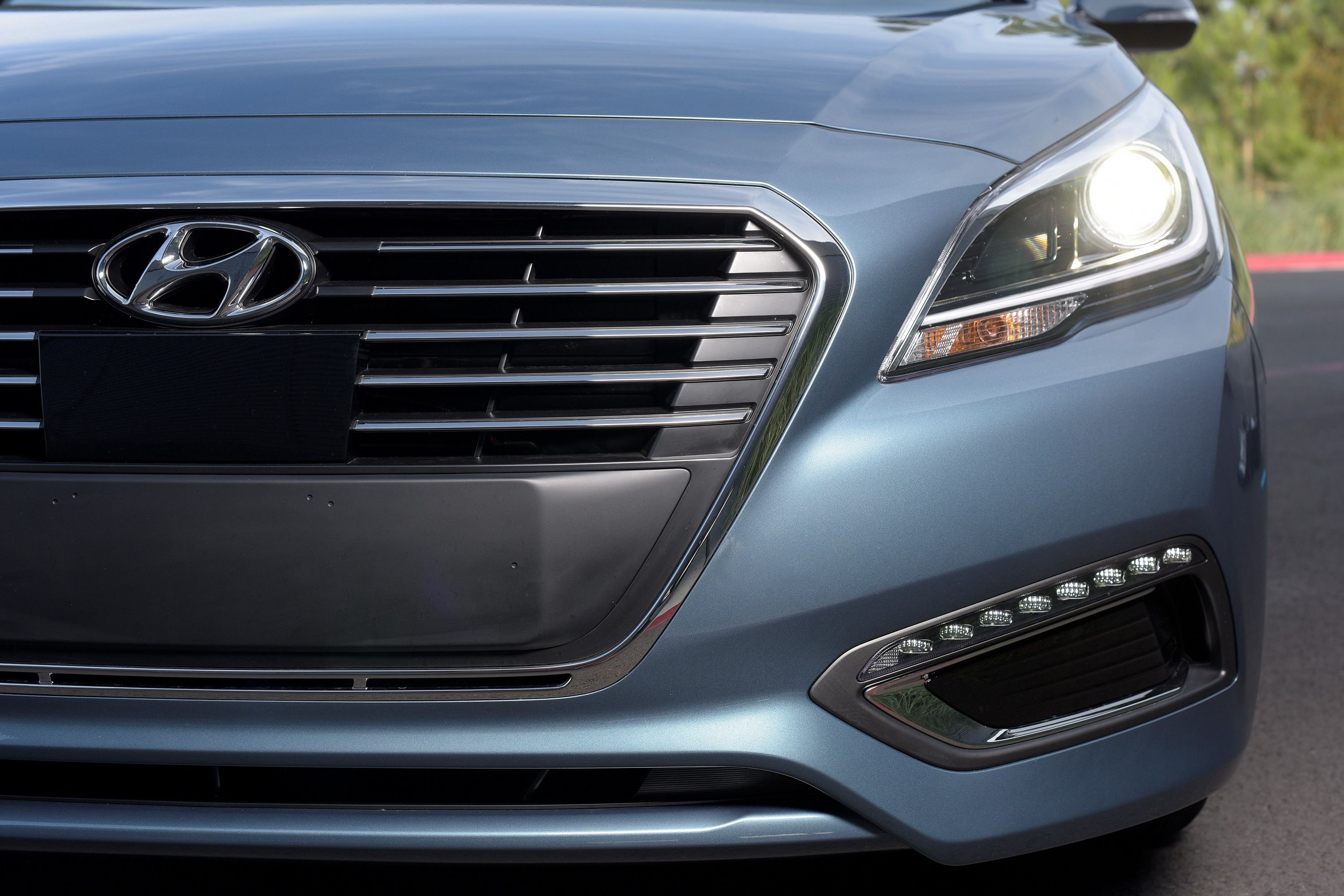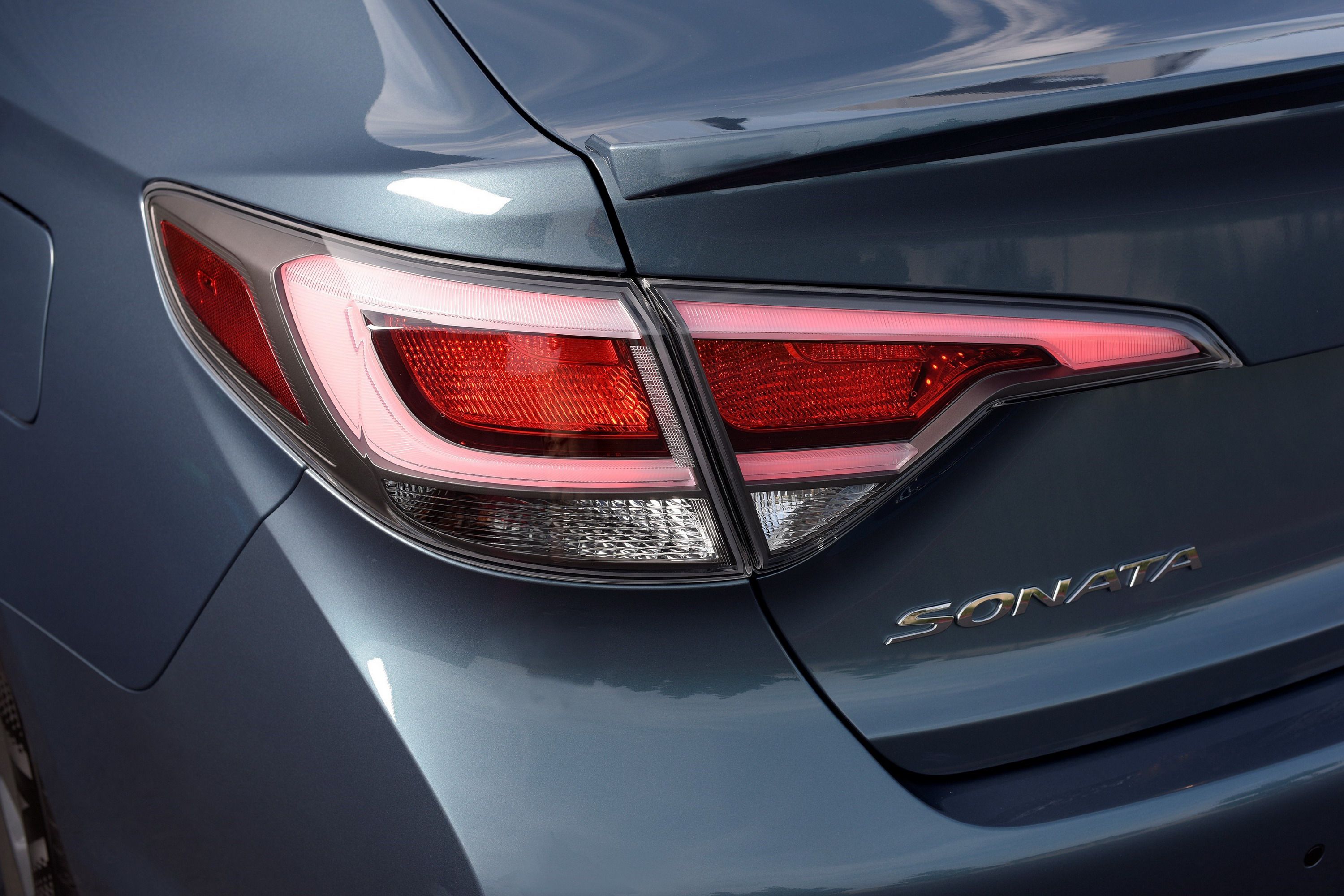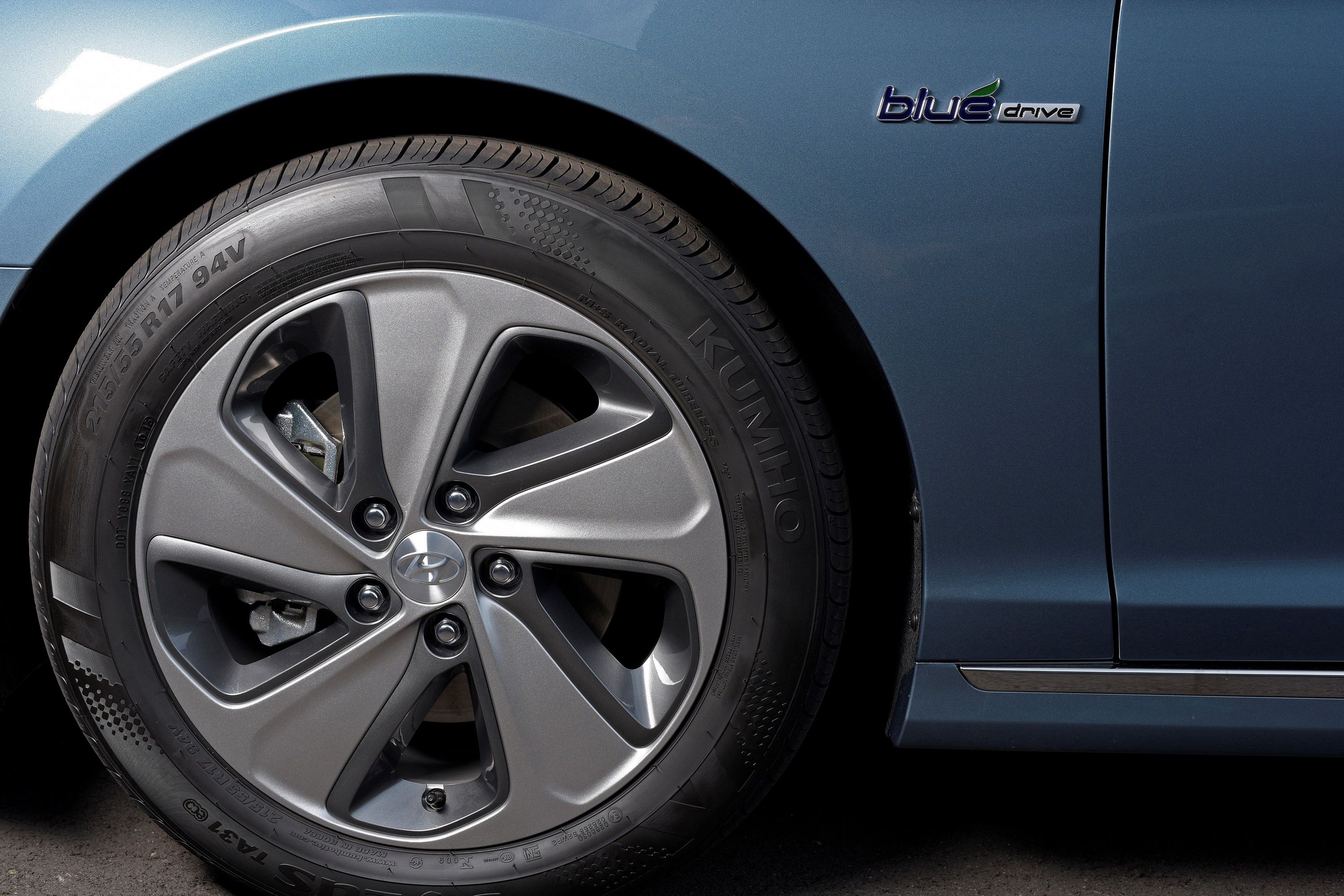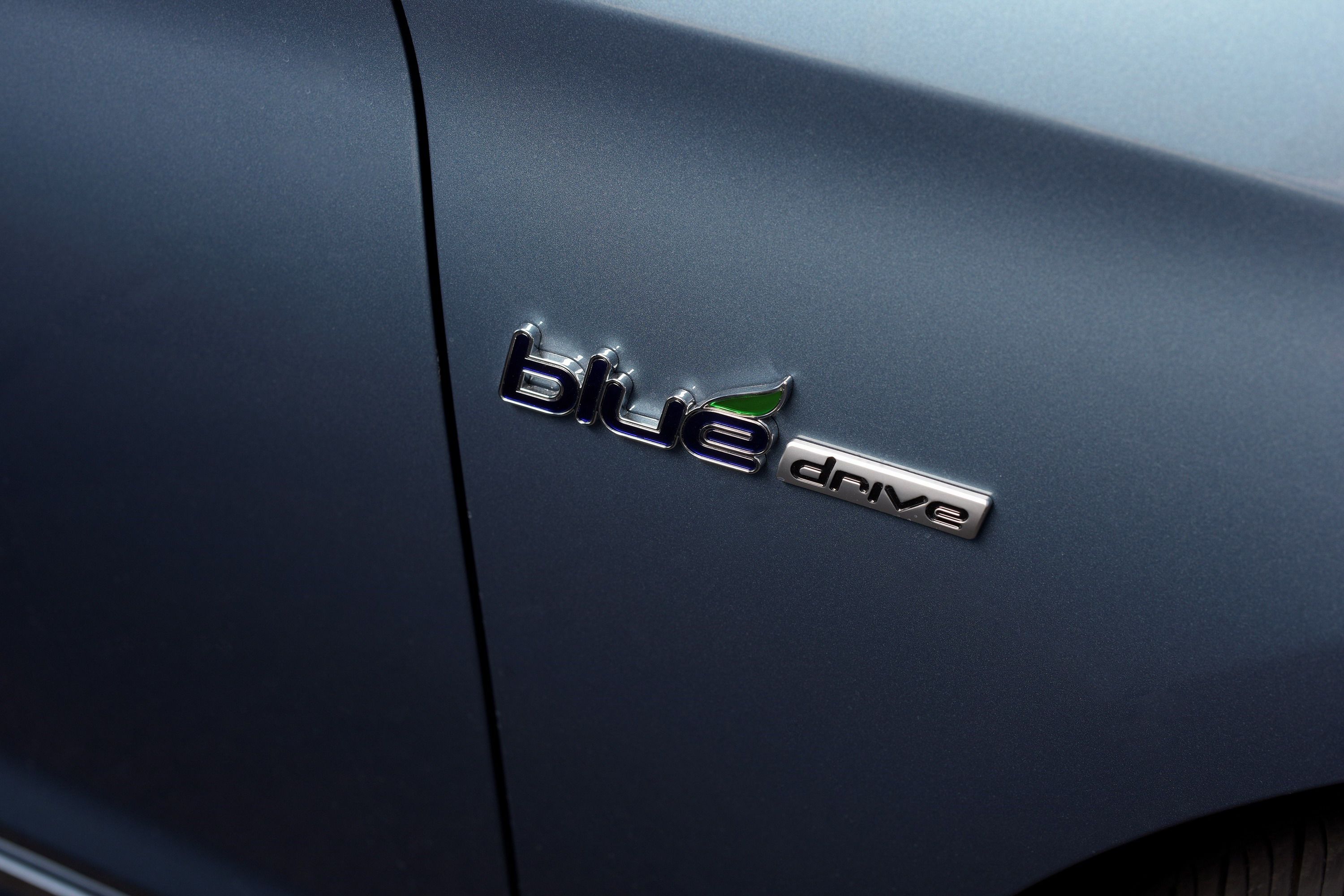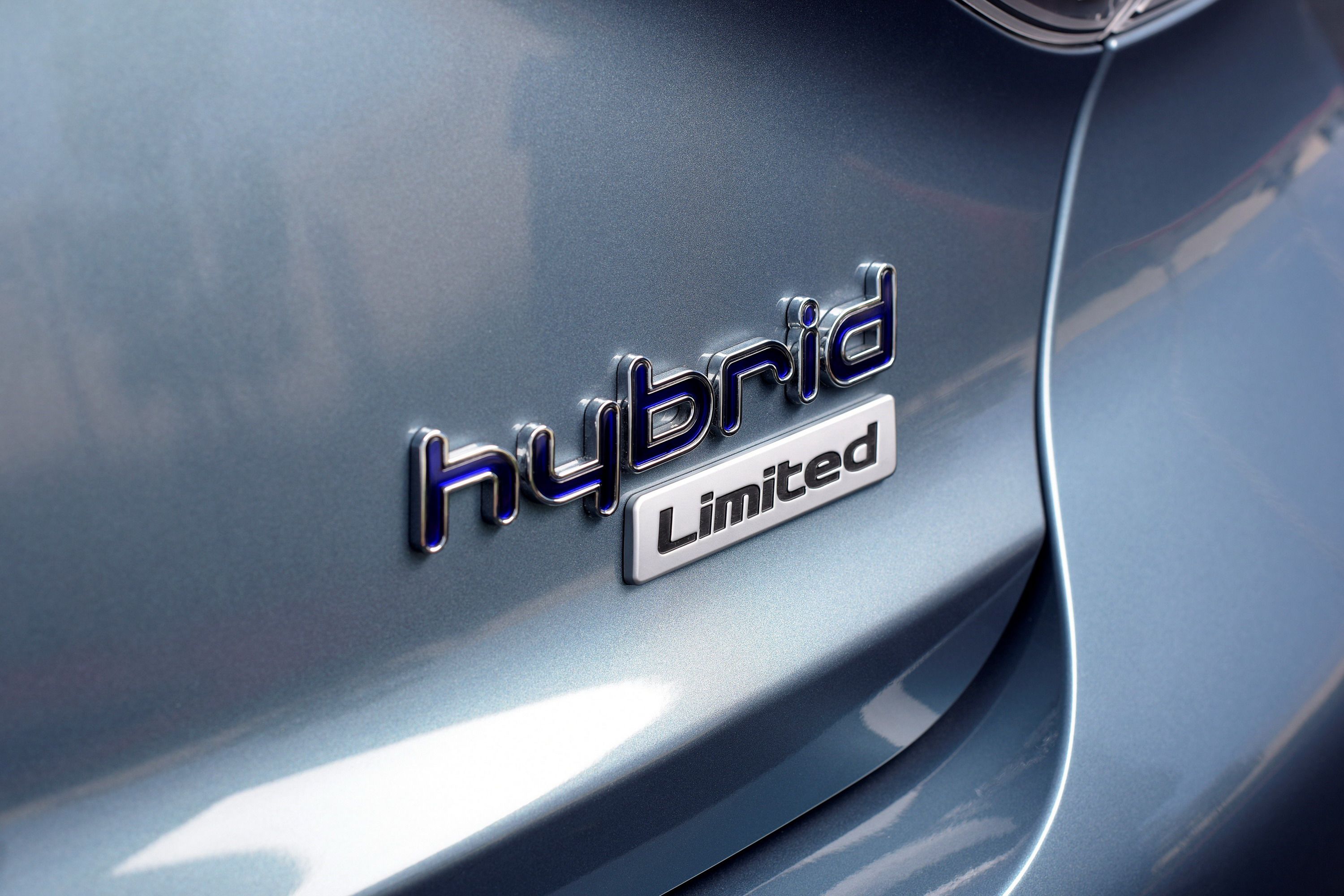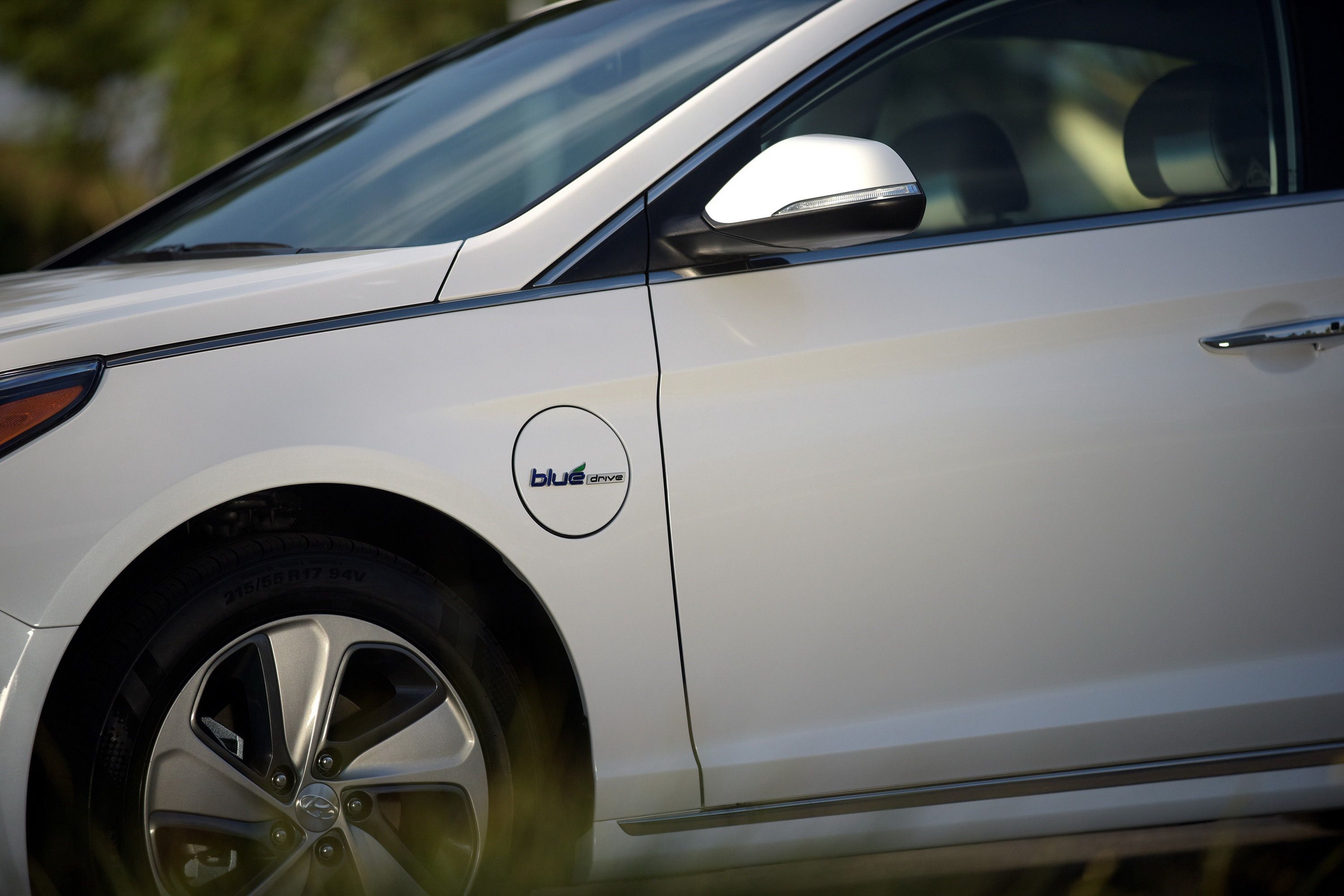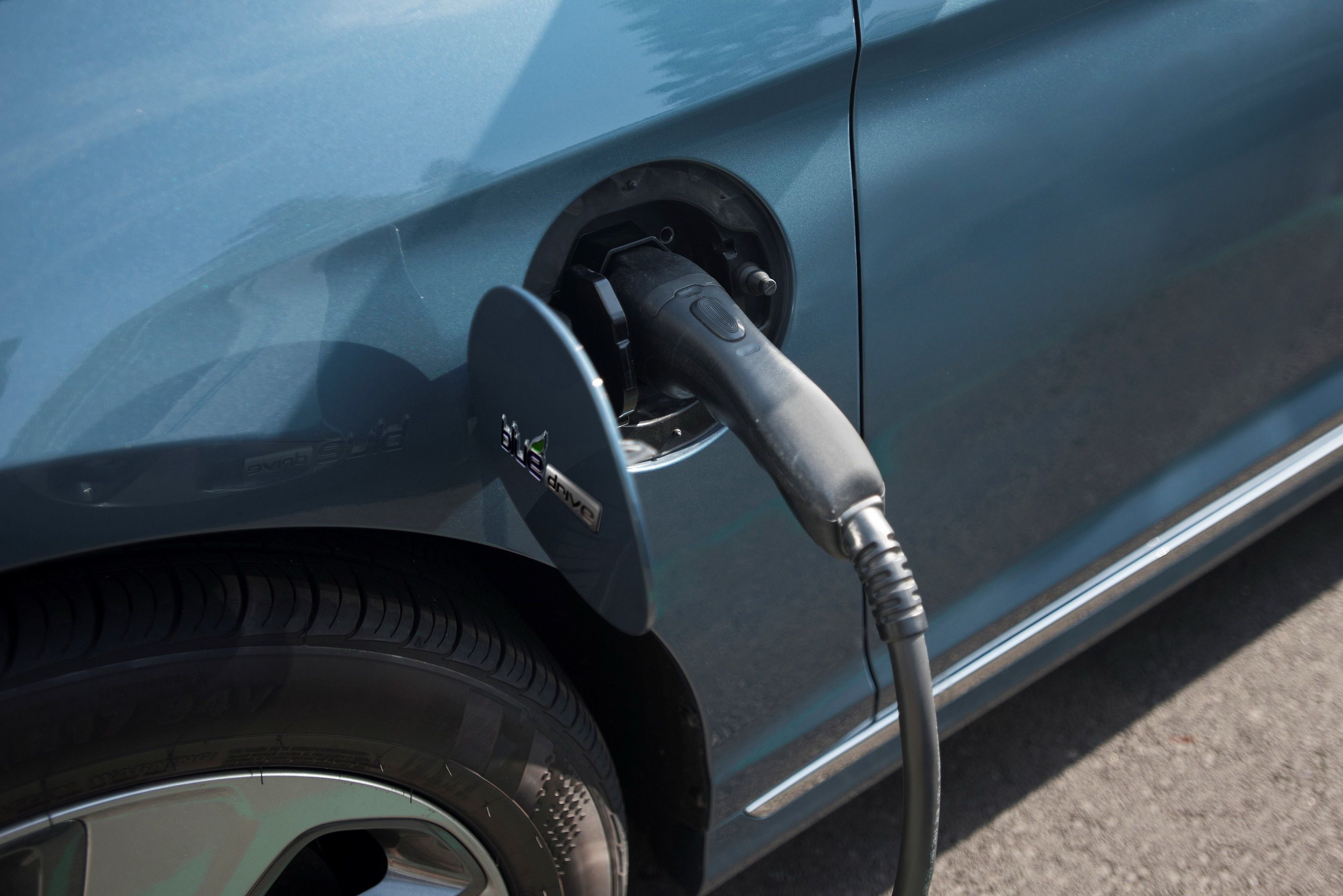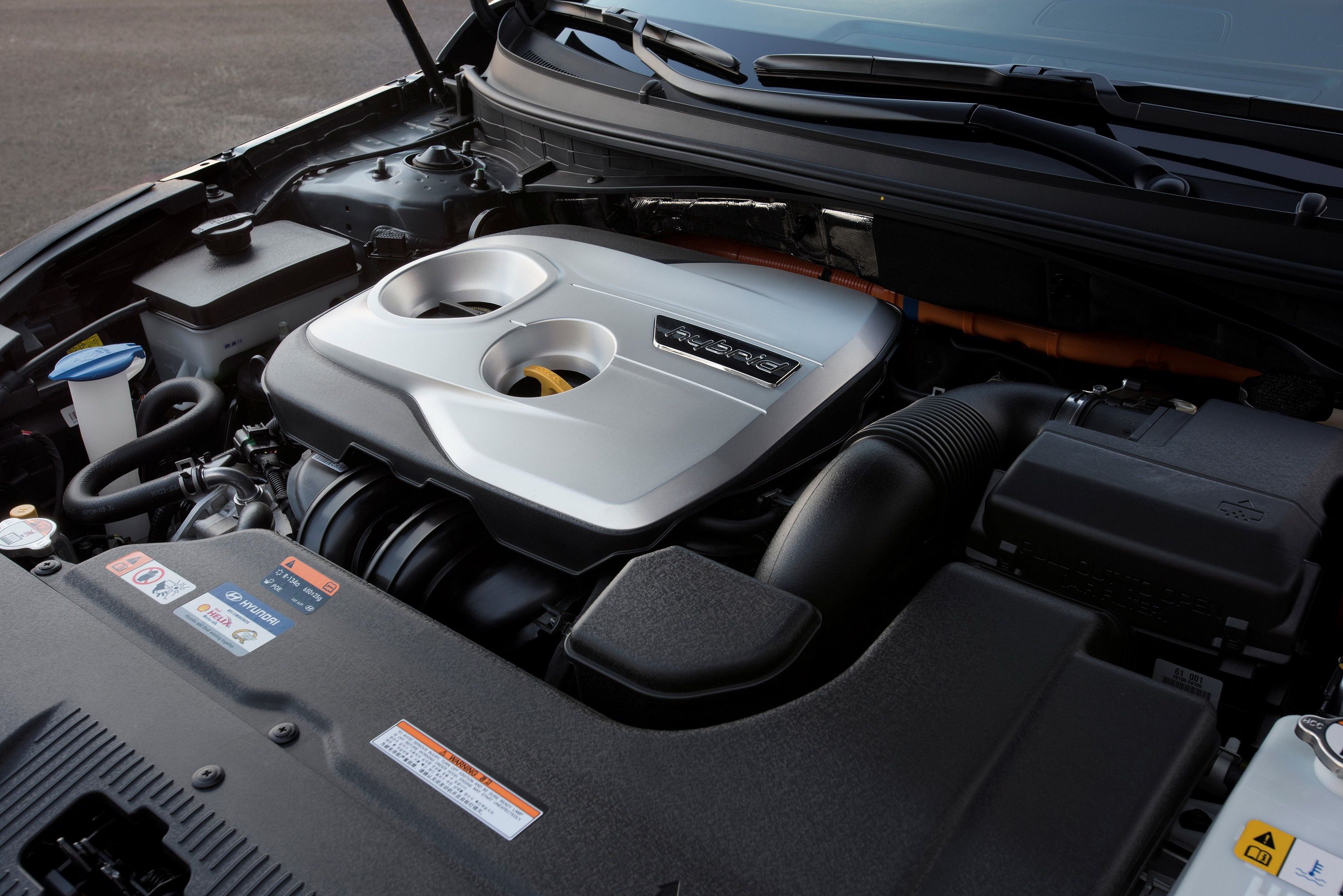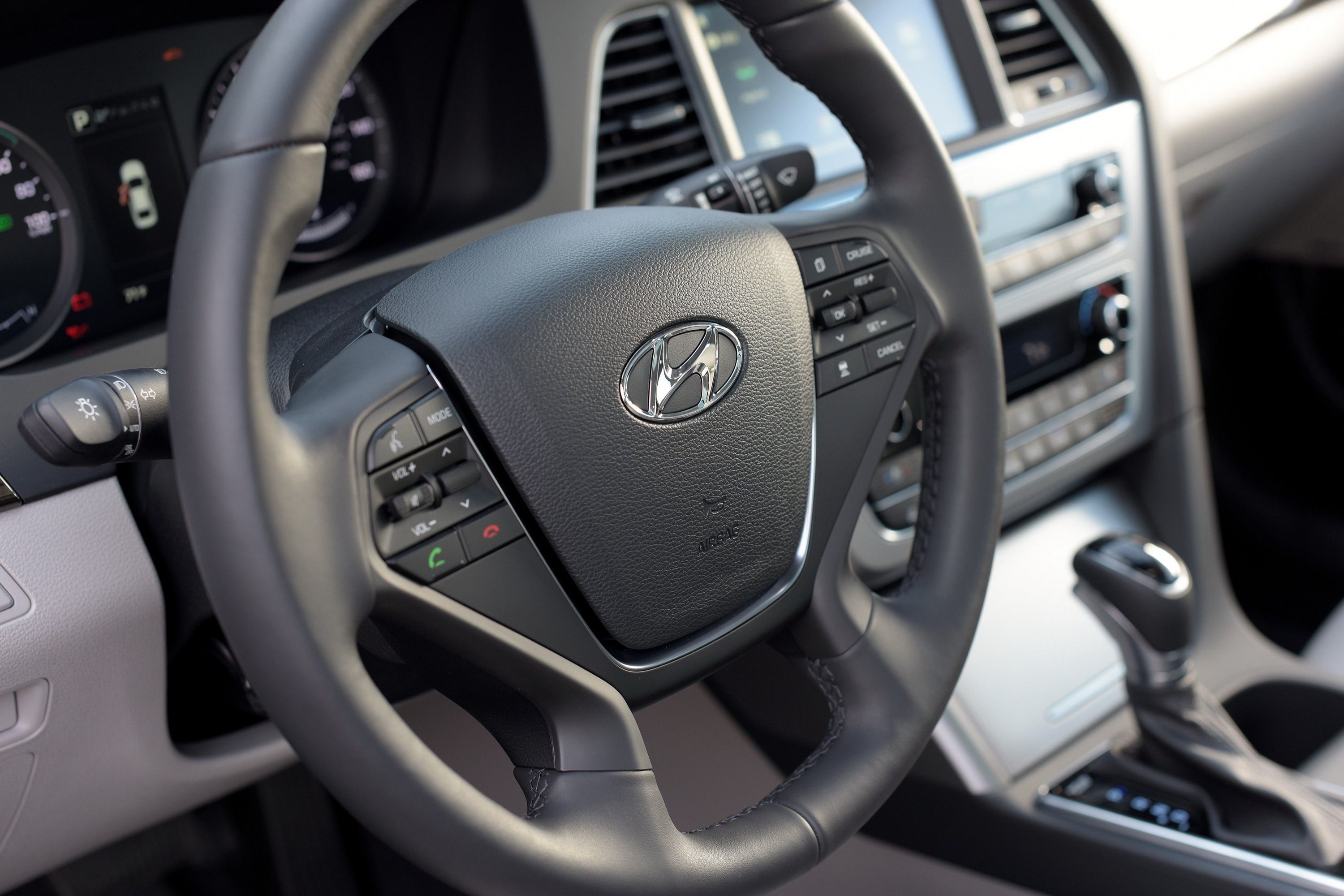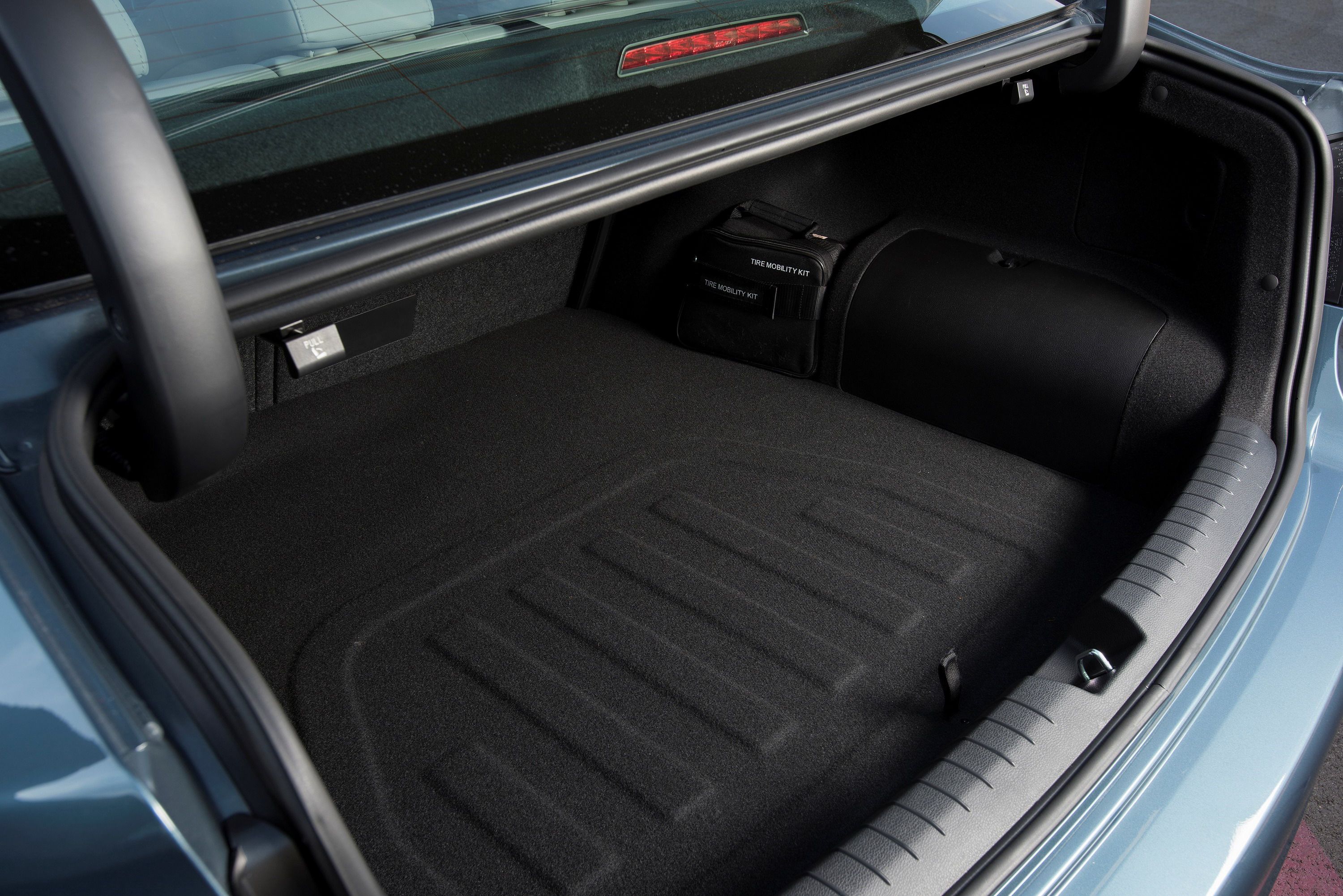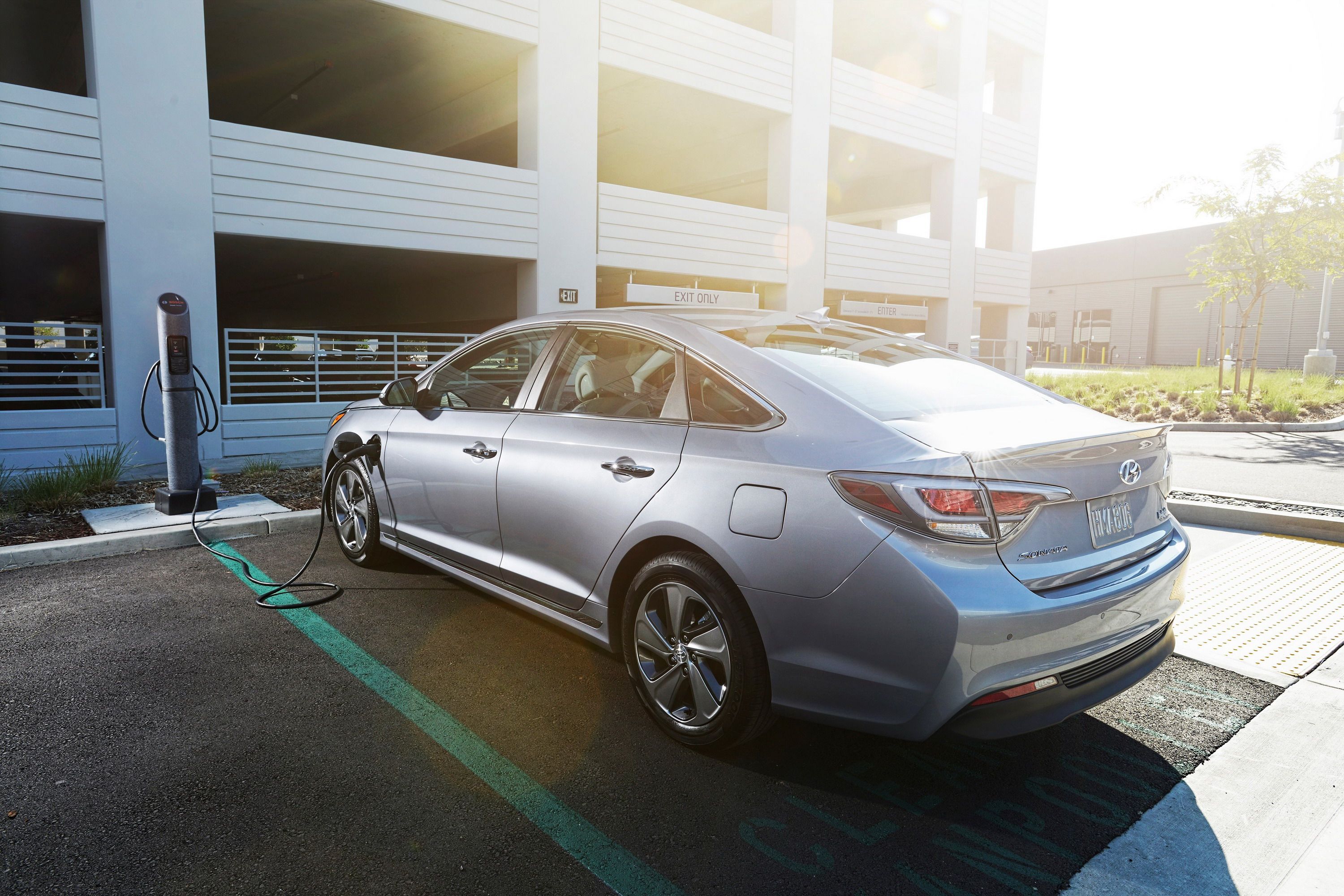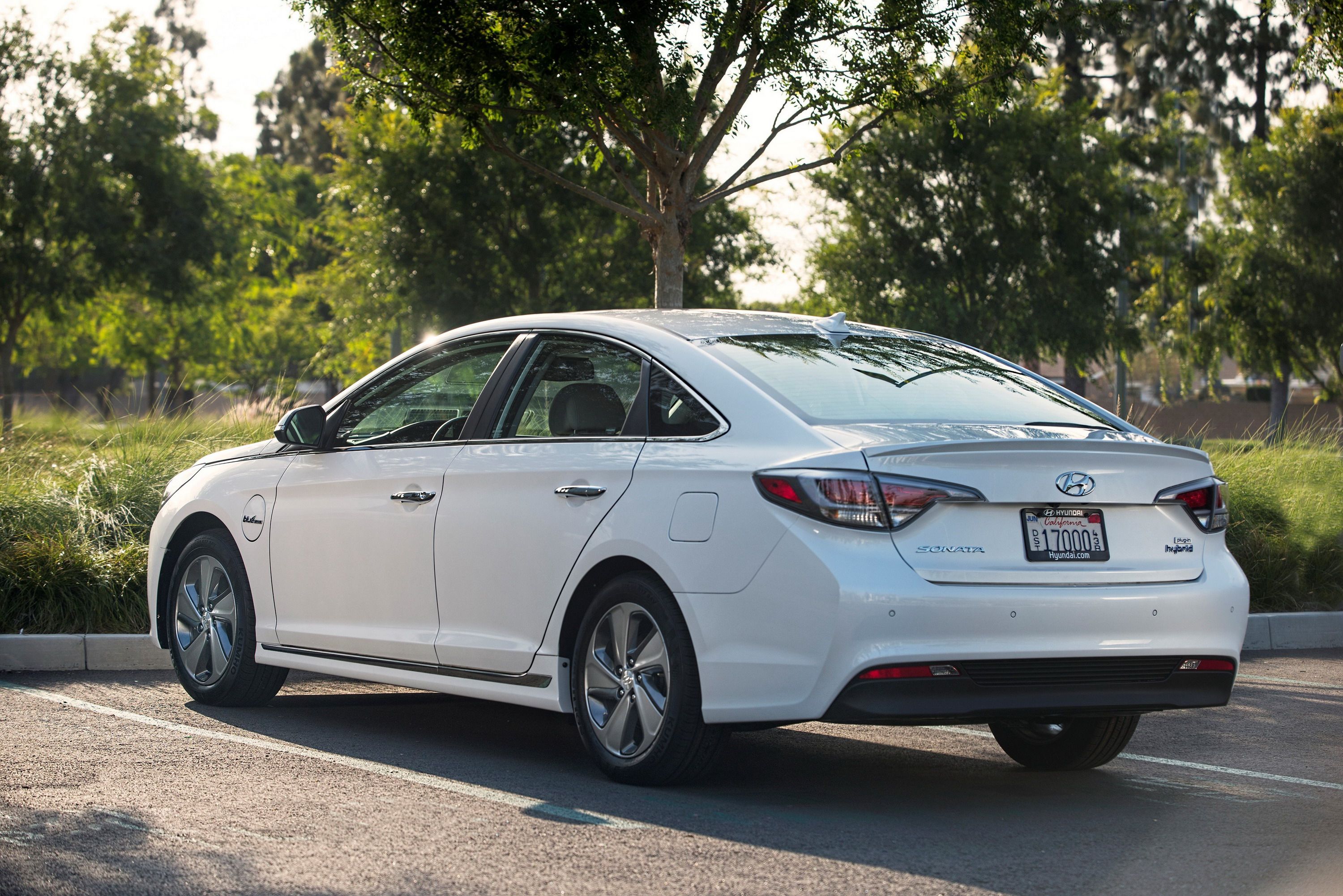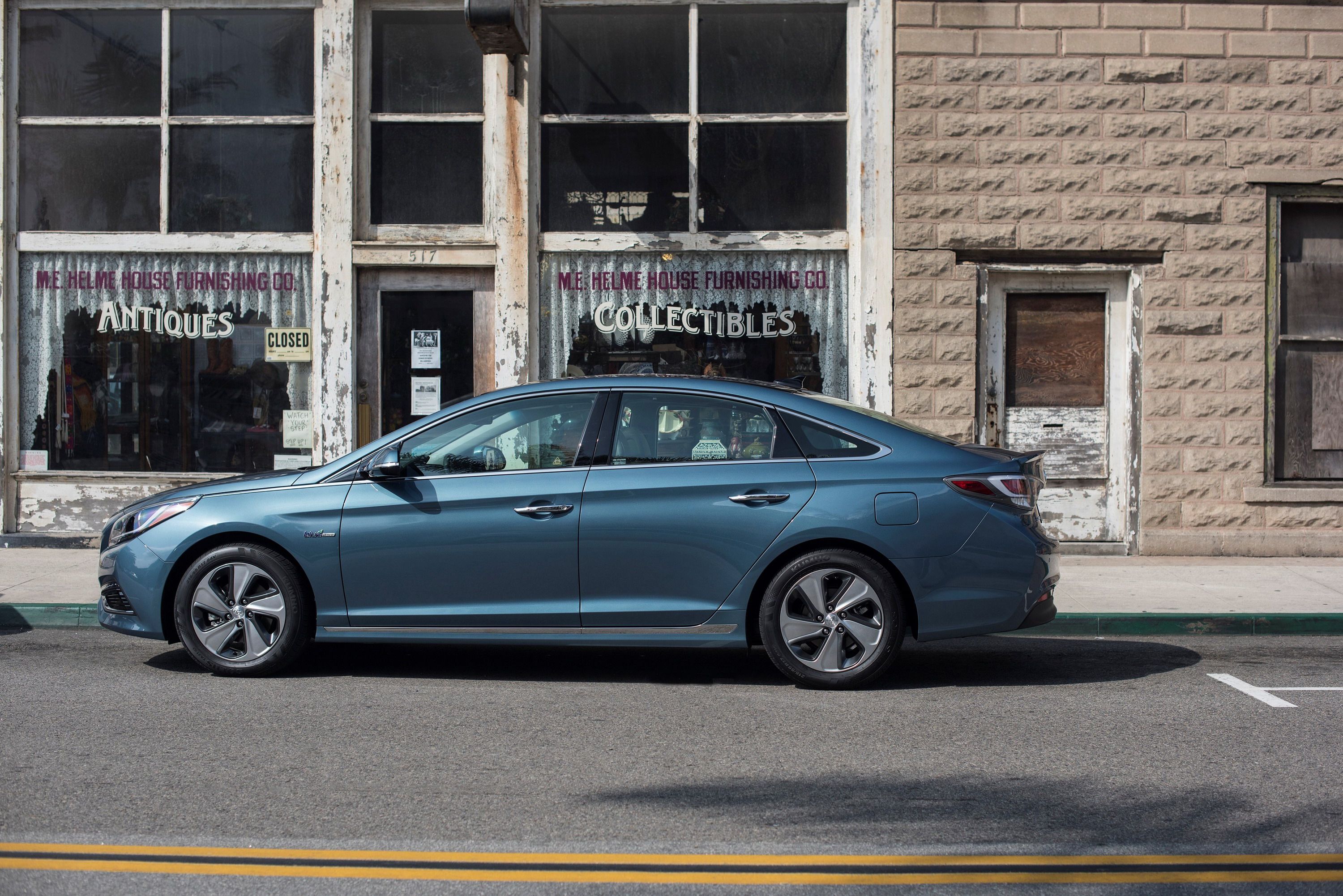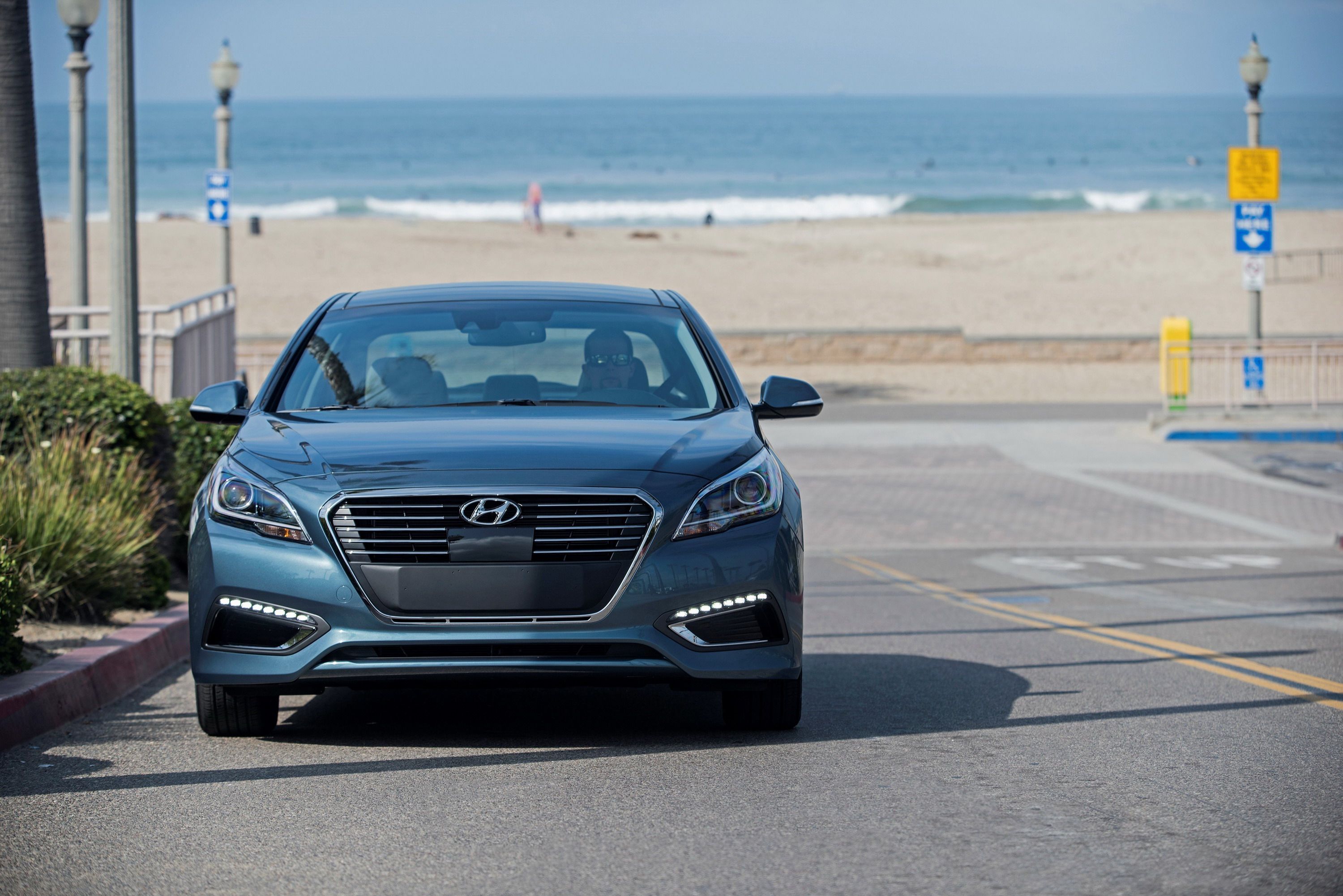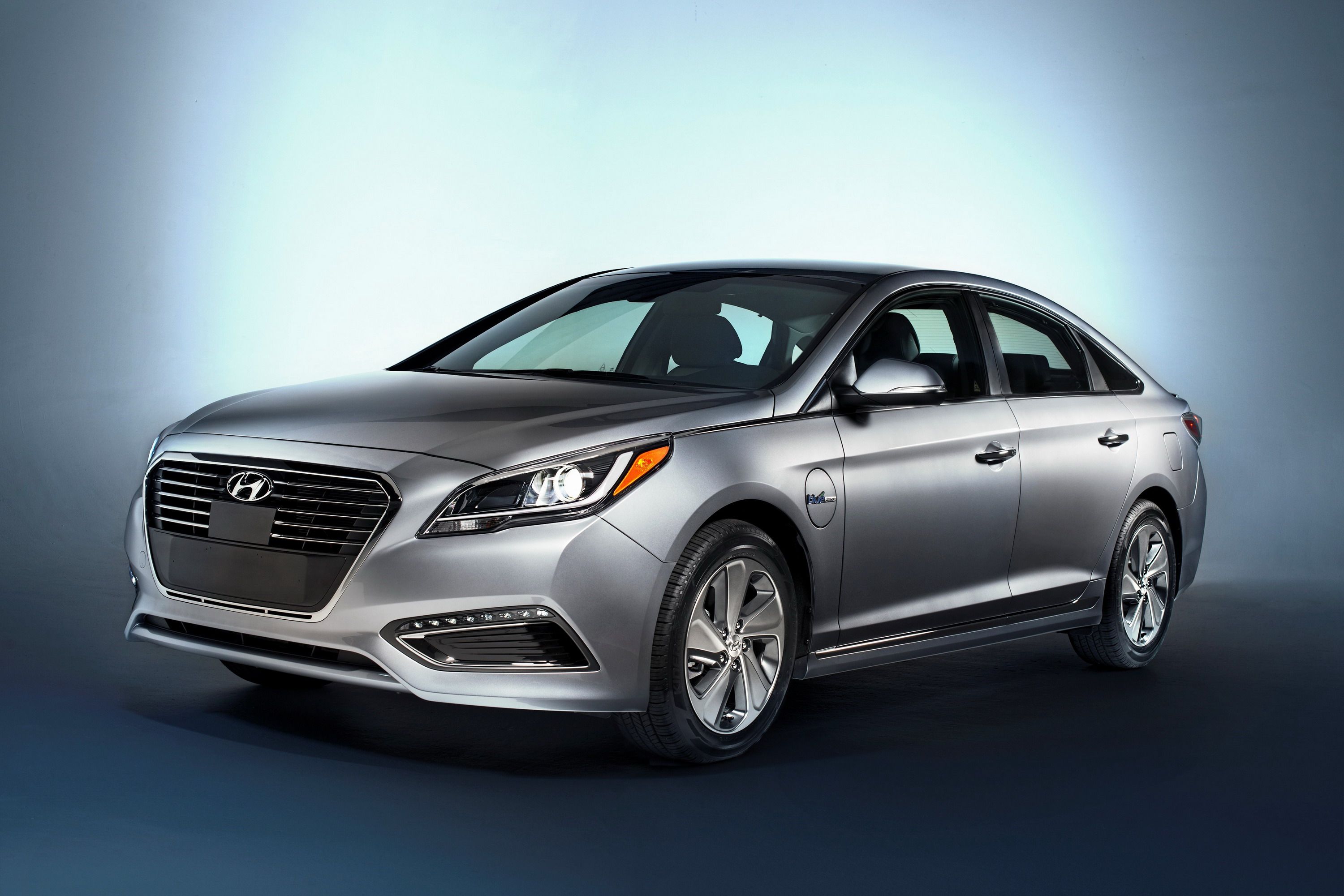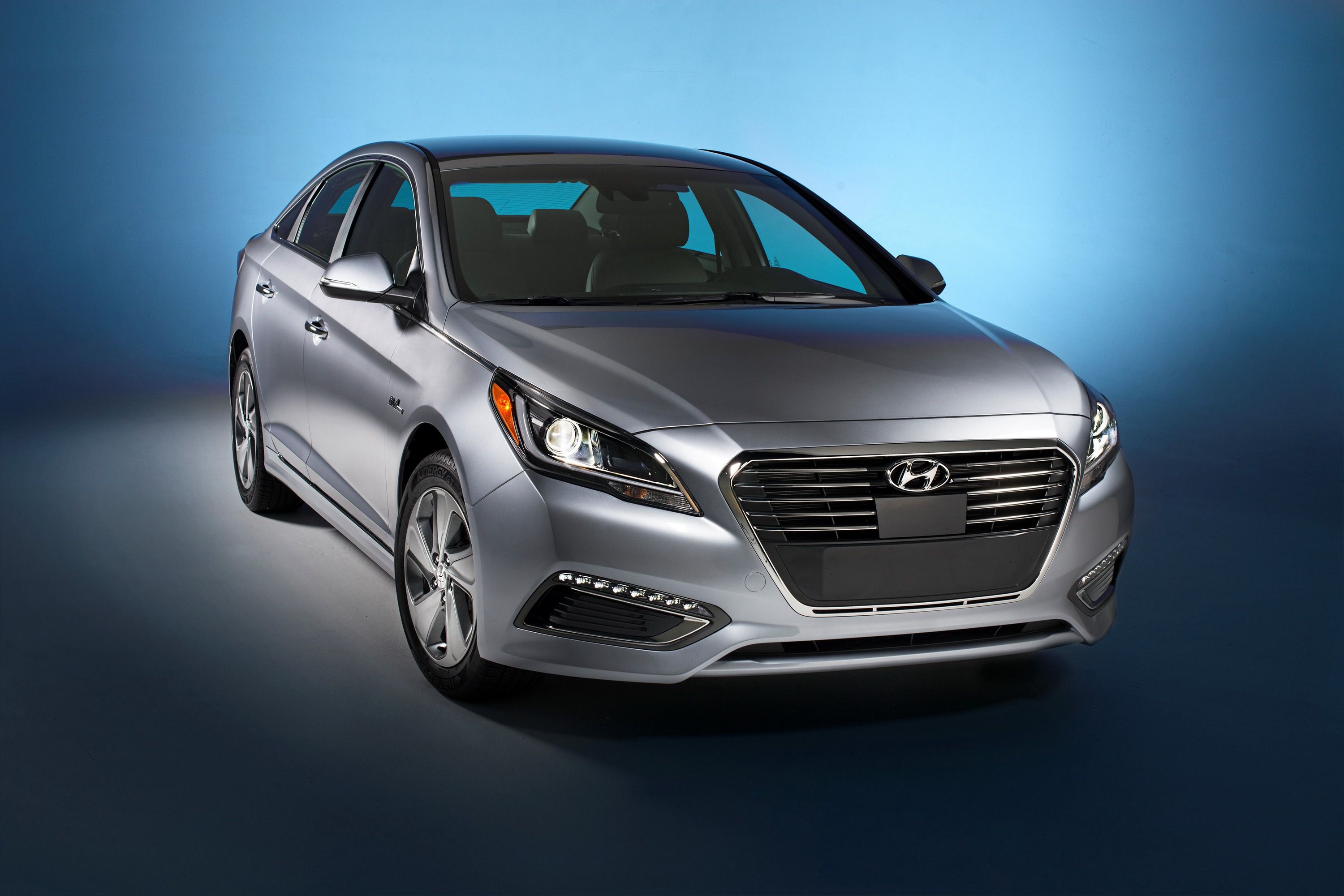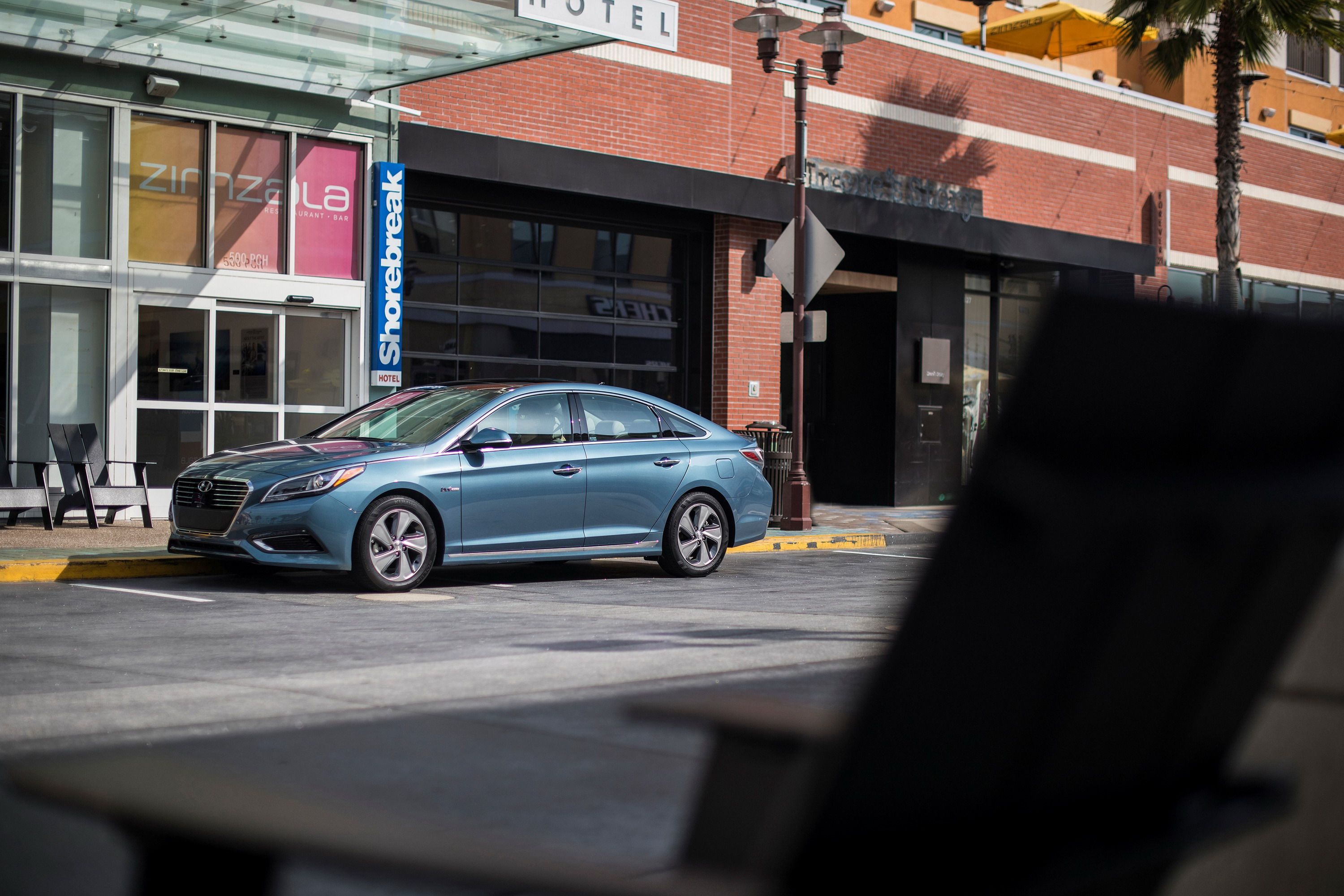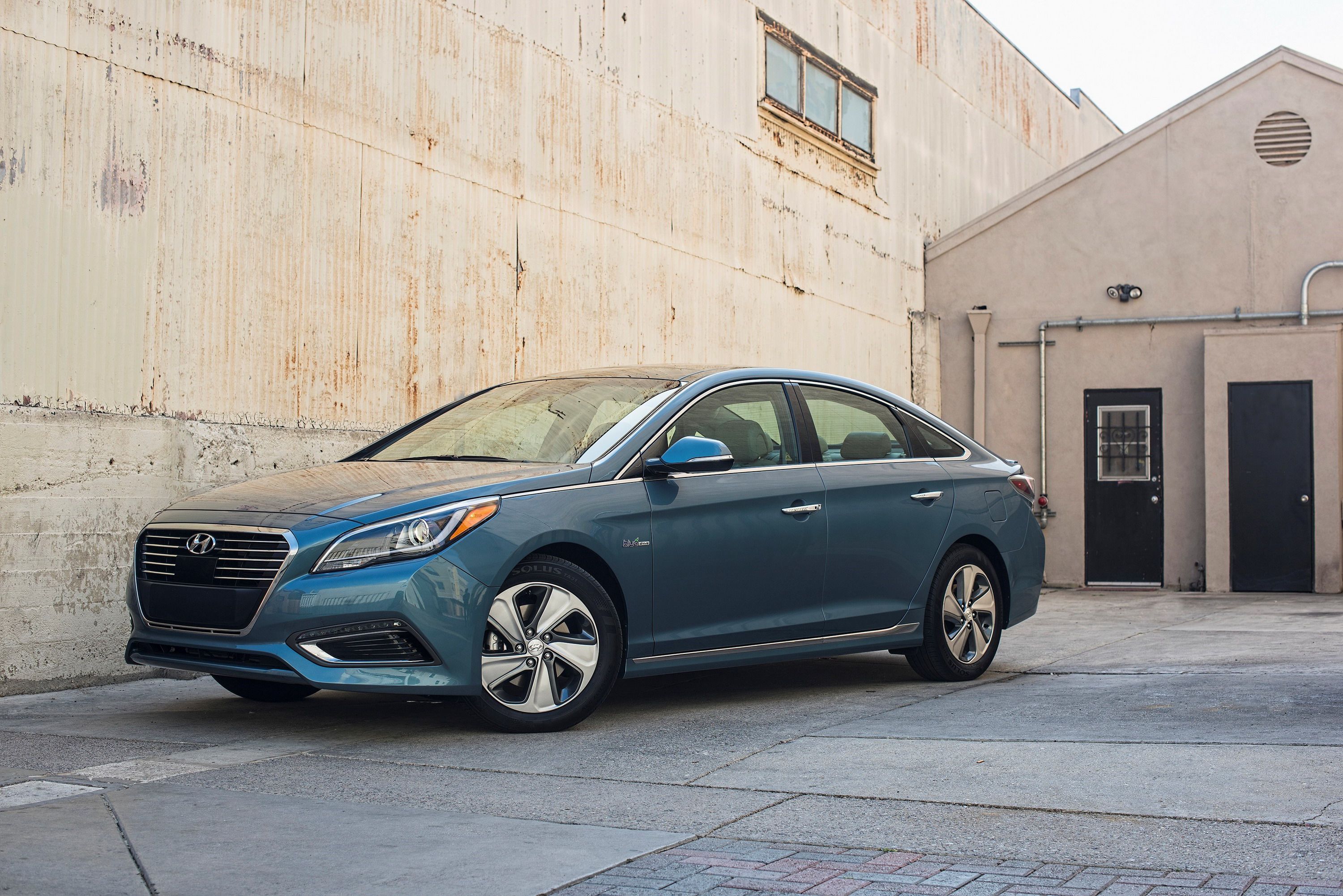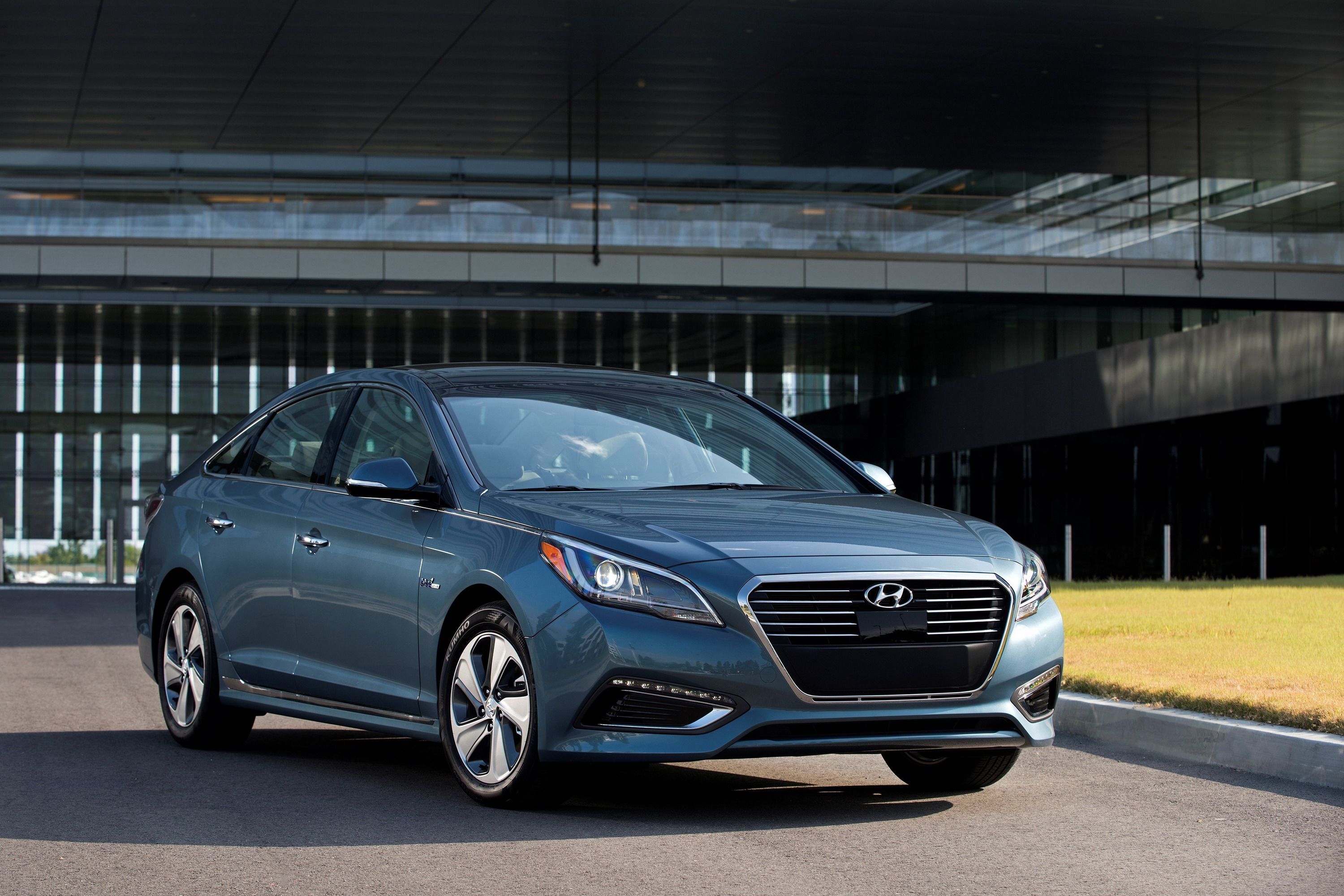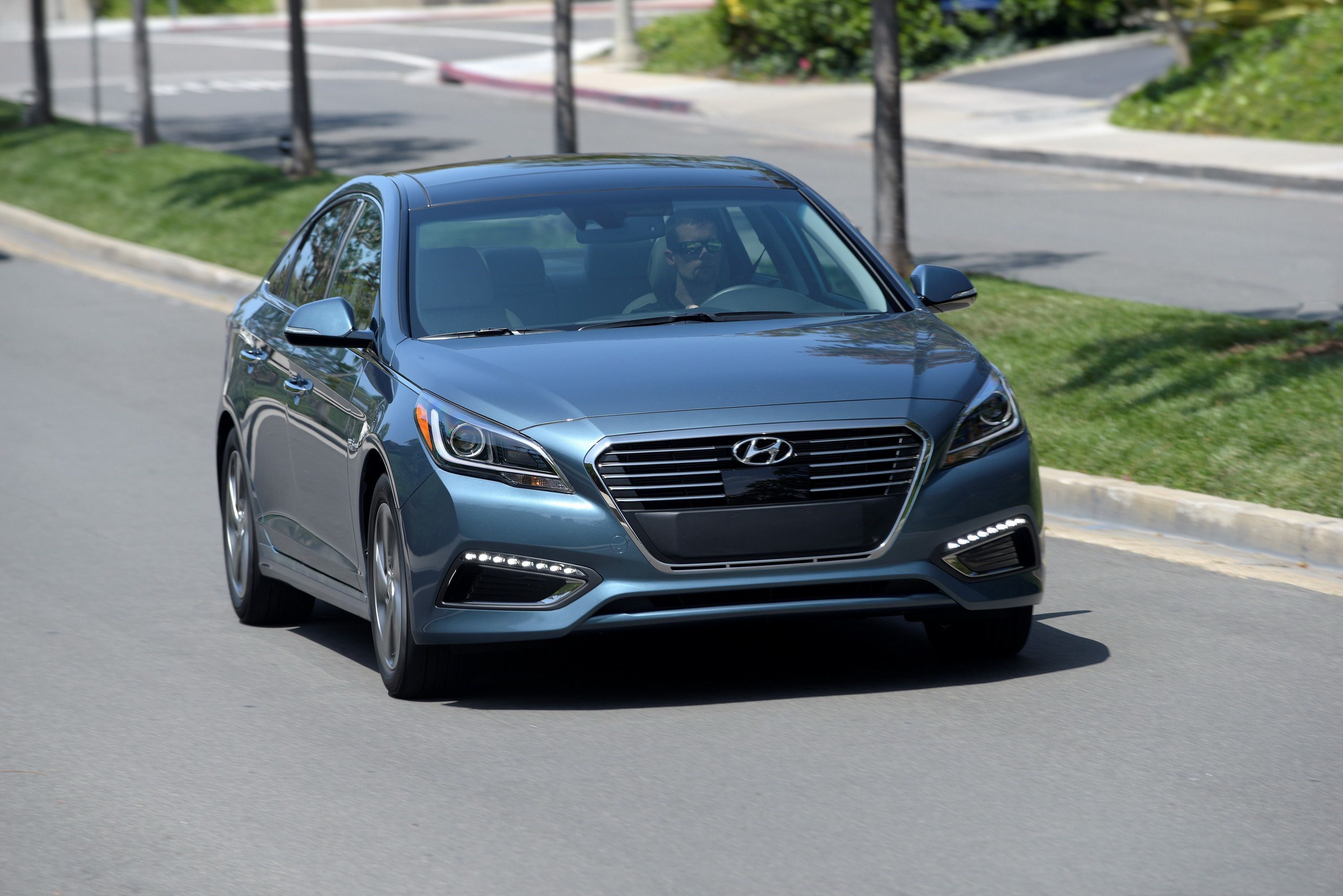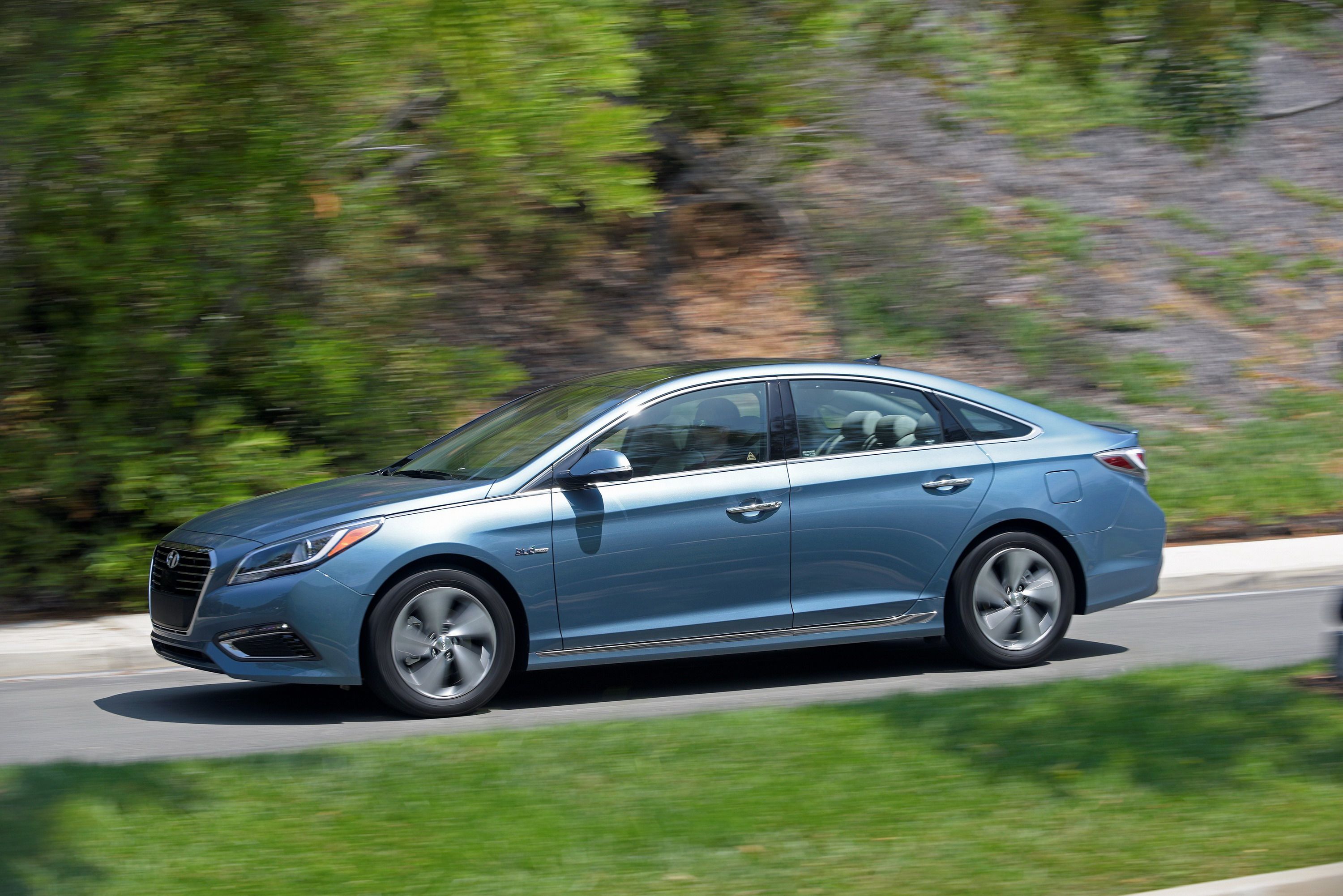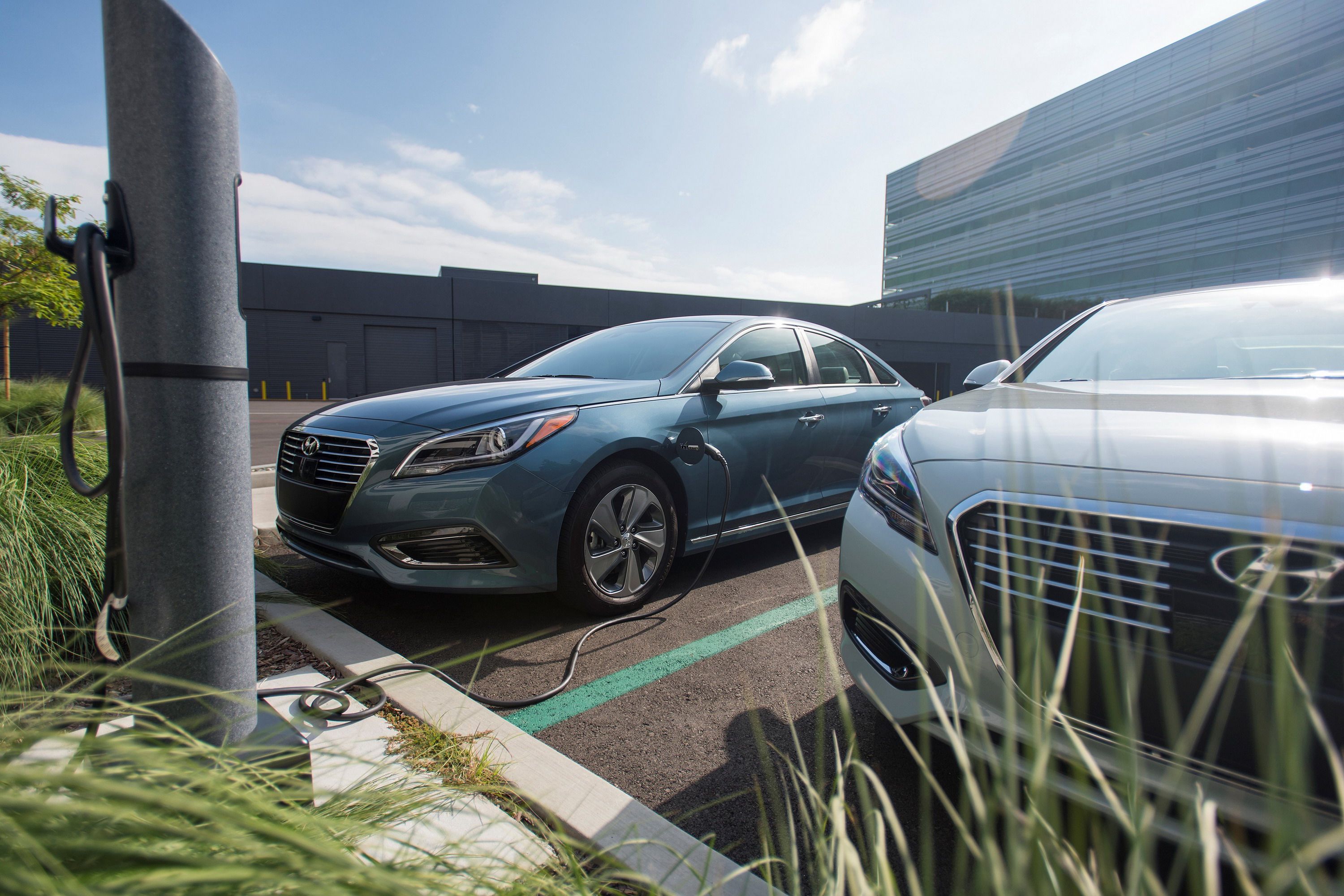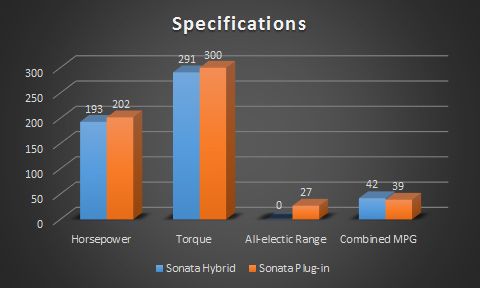Hyundai’s sixth-generation Sonata (2009 – 2014) sold pretty well here in the U.S., but over in the brand’s home turf, South Korea, the car didn’t exactly exceed sales expectations. As such, 2014 brought the seventh generation model to S. Korea, which ultimately came stateside for 2015. Featuring styling cues from the Hyundai HCD-14 Concept, the car utilizes Hyundai’s Fluidic Sculpture 2.0 design language that brings together things like a new grille design, new headlight lenses, LED foglights, an all-new dashboard, and there’s even a dual-clutch, seven-speed transmission available for certain models. Come 2016, and Hyundai released the Sonata Hybrid with pared a 2.0-liter engine with a 51 horsepower electric motor to provide fuel economy as high as 44 mph while cruising the interstate. With the Hybrid already on the road, it should come as no surprise that Hyundai has finally announced a plug-in variant of the Sonata Hybrid that offers an all-electric range of 27 miles and 99 MPGe when operating in EV mode.
While the new plug-in model uses the same 2.0-liter, four-cylinder the electric motor has been upgraded from 38 kW to 50 kW. That means that the new plug-in hybrid is actually a little more powerful. But, there is a tradeoff. See, the Sonata hybrid pulls 39 mpg in the city, 44 mpg on the highway, and 42 mpg combined. While it seems like a plug-in hybrid would be more fuel efficient, this model actually gets 39 mpg combined when operating in hybrid mode. So, unless you plan to actually make use of that all-electric range on a regular basis, you might want to consider the regular hybrid over the plug-in model. But, more about that later.
For now, let’s take a look at the DNA that makes up the new plug-in Sonata and everything that it brings to the table.
Continue reading to learn more about the Hyundai Sonata Plug-in Hybrid Electric Vehicle.
2017 Hyundai Sonata Plug-in Hybrid Electric Vehicle
- Make: Array
- Model: 2017 Hyundai Sonata Plug-in Hybrid Electric Vehicle
- [do not use] Vehicle Model: Array
Exterior
Move on… there’s nothing new to see here. No seriously, there’s really nothing different between the Sonata Hybrid and the Plug-in Hybrid. Well, there is one difference, the plug-in hybrid has the charger access door and charging port just ahead of the driver’s side door on the front fender. As such, the access door features an emblem that reads “blue drive.” Otherwise, the car features the exact same exterior styling found on the standard hybrid. So, the exterior benefits from the same hexagonal grille and LED fog lights to go with a somewhat aerodynamic exterior.
Starting in early 2017, the car will be offered with an “all-new” color pallet to choose from that includes colors like Hype White, Metropolis Grey, Skyline Blue, and Nocturne Black. Then again, those colors are available for the standard hybrid model in 2017, so they aren’t exclusive colors by any means.
Interior
Much like the exterior, there’s nothing really interesting to talk about on the inside of the Plug-in Sonata. Hyundai says it has a “distinctive” instrument cluster with a charge indicator, however, it is the same instrument cluster that is found inside the standard hybrid model. For 2017, there was a number of new interior color options that are included with the plug-in, including gray and beige in cloth or leather. Blue Pearl with red contrast stitching also carries over from the standard hybrid, but you must opt for leather interior to get this color. The center stack is graced by a seven-inch color touchscreen display with Android Auto and Apple CarPlay connectivity. And, like the hybrid, the car comes standard with Blue Link Connected Care with various car functions controlled by the Blue Link app.
Drivetrain
Here’s where things really differ a bit, but only to a certain extent. The same 2.0-liter, gasoline-powered, four-cylinder engine carries over. However, the plug-in model gets a more powerful electric motor that is rated at 50 kWh. This system, paired with a 9.8 kWh lithium-ion polymer battery pack and six-speed automatic transmission is able to produce a fuel economy rating of 39 mph combined when in hybrid mode and 99 MPGe when operating in EV mode. Estimated total range is 590 miles on a single fill-up. All-electric range is said to be up to 27 miles, which isn’t very impressive in my book but, according to Hyundai, is the best of any other mid-sized plug-in sedan.
That 50 kW electric motor is 32 percent more powerful than that used in the standard hybrid model, which clocks in at 39 kW. The engine itself delivers 154 horsepower and 140 pound-feet of torque, which is identical to that of the standard Hybrid, but total system output is rated at 202 horsepower, just nine horsepower more. Hyundai didn’t have anything to say about the torque output of this electric motor, but the 38 kW motor found in the standard hybrid delivered 151 pound-feet, so it’s safe to assume there’s a little more torque generated from this motor. Total torque output should sit around the 300 pound-foot mark.
There are no performance figures to speak of, and honestly, you’re not looking at a plug-in hybrid for performance anyway, so that doesn’t really matter. Charging times, however, do matter, and on a 240-volt, level-two charging station it takes “less than three hours” for a full charge. A standard 120-volt outlet is said to take “less than nine hours.” That seems like an awfully long charging time on a standard plug to me, especially if you consider that measly 27-mile electric range.
In the end, the plug-in hybrid does at least offer some electric range, however, fuel economy suffers in comparison to the non-plug-in model. The non-plug-in Sonata achieves up to 44 mph on the highway and 42 mpg combined while the new plug-in can claim just an “estimated” 39 mpg.
Pricing
Hyundai hasn’t announced pricing for the 2017 model year, however, the 2016 Sonata Hybrid starts out at $26,000 while the 2016 Plug-in hybrid starts out at $34,600. That means that the 2016 plug-in model comes at a $8,600 premium of the standard hybrid model. I wouldn’t expect pricing to change much for 2017, so expect to see the same sticker price at the dealer when the 2017 models roll onto the showroom floors.
Competition
Ford Fusion Energi
At the heart of the mid-sized, plug-in market, you’ll find the Ford Fusion Energi. It is powered by a 2.0-liter four-cylinder that is paired with an electric motor. At this time, Ford has yet to disclose the rating of the electric motor, however, peak output is rated at 195 horsepower and 246 pound-feet of torque. Shifting duties are handled by an eCVT transmission which enables the sedan to hit a 60 mph sprint in about eight seconds and a top speed of 102 mph. Here are the real selling points, though. The Fusion Energi can pull 44 mpg in the city, 41 mpg on the highway, and 43 mpg combined. On the MPGe scale, the care achieves 108, 92, and 100, respectively. So, the fusion falls just a little short in the power department and the energy storage department with a 7.6 kWh battery back, but comes much cheaper than the than the Sonata Plug-in at $31,120 as of the time of this writing. In the end, the Fusion gets better fuel economy, comes in more than $3,000 cheaper, and still gets an all-electric range of 21 miles. If you’re just looking for that extra-green status of owning a plug-in vehicle, the fusion seems to make a little more sense here.
Read our full review on the Ford Fusion Energi here.
Chevy Volt
While the Chevy Volt may actually be a bit smaller than the Sonata, it has a lot going for it and is worthy of looking at as a competitor. Why you ask? Well, there's that fresh styling and a new all-electric range of 53 miles for starters. Sounds pretty impressive compared to the Sonata Plug-in, doesn’t it? Inside the car is stylish and commanding and has the feel of an electric car. Under the hood is a 1.5-liter four-cylinder that serves as a range extender and generator for the electric system. Fuel economy is said to be 42 mpg on the highway, 43 mpg in the city, and 42 mpg combined. It also attains and EPA rating of 106 MPGe. With a total of 53 all-electric miles available before the gasoline engine kicks in, the Volt can travel a total of 420 miles on an 8.9-gallon fill-up. Pricing starts out at $33,220 as of the time of this writing. It might not be as big as the Sonata or the Fusion, but if you’re not concerned with space, the Volt is definitely the way to go as far as all-electric range is concerned.
Find out more about the Chevy Volt here.
Conclusion
Hyundai has made huge strides in the last decade as far as providing high-quality vehicles and now it’s got the Genesis brand too. These are all great things, however, I think Hyundai has the game messed up as far as pricing goes. Sure, it does have 27 miles of all-electric range that the hybrid doesn’t, but it’s overall fuel economy figures are worse than that of the standard hybrid. Unless you have a very short commute – say 14 miles one way – you’re going to use nearly the same amount of fuel in the long run. On top of that, you’re paying a pretty hefty premium to deal with plugging in your vehicle every night to get that all electric range. And, don’t even get me started on the nine-hour charge time on a standard outlet.
To me, these plug-in hybrids that yield little benefit at a higher price really don’t make much sense unless you’re one of those people that like to make a statement. If I were looking to plug my car in every night, I would probably look to something like the Volt or the Fusion. The volt starts out a grand cheaper and still manages to achieve more than 50 miles of range, which is more than enough for the average daily commute. It just doesn’t seem to make much sense to deal with plugging in the vehicle on a regular basis after paying that much more for the car in the first place.

